icon = https://www.livestockoftheworld.com/icons/DonkeyIcongrey.png
Donkeys were first domesticated around 5,000 years ago as beasts of burden and companions, most likely in Egypt or Mesopotamia. There are about 41 million donkeys in the world today; China has the most with 11 million, followed by Pakistan, Ethiopia, and Mexico.
Donkeys vary considerably in size, depending on breed and management. The height at the withers ranges from 7.3 hands (31 inches or 79 cm) to 15.3 hands (63 inches or 160 cm), and they weigh from 80 to 480 kg (180 to 1,060 lb.). Working donkeys in the poorest countries have a life expectancy of 12 to 15 years; and in more prosperous countries, they may have a lifespan of 30 to 50 years.
Breeds of Donkeys
There are the following breeds of Donkeys:
|
 Abyssinian Abyssinian
|
|
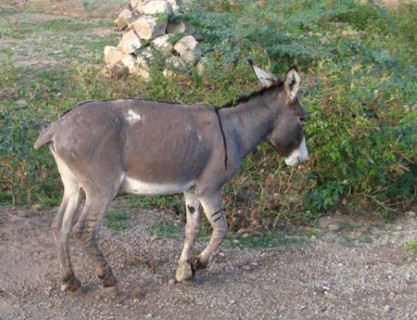
|
Abyssinian donkeys roam the rugged landscapes of Ethiopia, particularly favoring the dry and mountainous regions. Standing between 8.4 and 10 hands tall, they carry a weight ranging from 190 to 450 pounds. Their gestation period spans from 11 to 13 months, while their resilient nature grants them a lifespan averaging between 30 to 40 years.
These hardy creatures predominantly exhibit a slate-gray hue, though some donkeys may display a
...
|
|
 African wild asses African wild asses
|
|
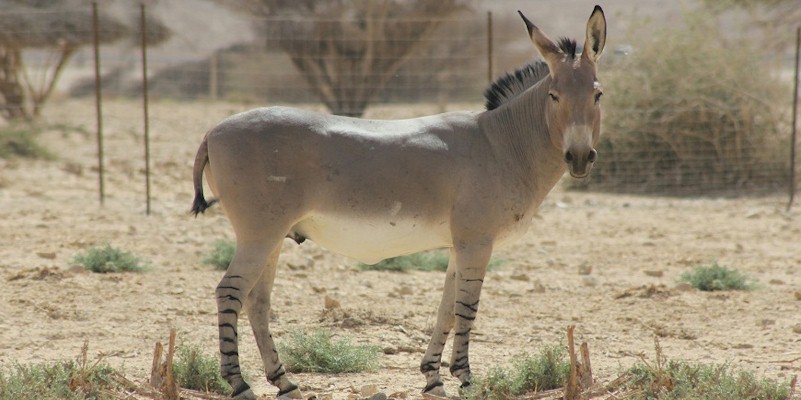
|
African wild asses or African wild donkey (Equus africanus) are
a wild member of the horse family, Equidae. African wild asses are the ancestor
of the domestic donkey.
They live in the deserts and other arid areas of the Horn of
Africa, in Eritrea, Ethiopia and Somalia. They formerly had a wider range north
and west into Sudan, Egypt, and Libya. Their diet consists of grasses, bark,
and leaves. Despite being primarily adapted for
...
|
|
 Albanian Albanian
|
|
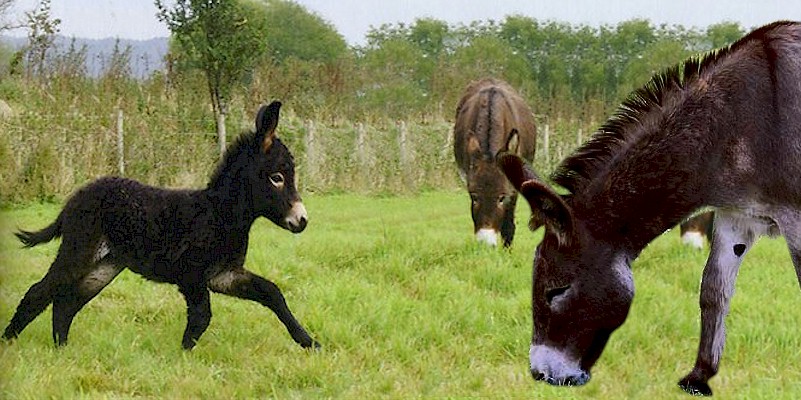
|
Locally Albanian Donkeys are referred to as "gomari". They
are kept as pack animals or for farm work.
Donkeys have a long history in Albania, especially in
coastal and hilly regions, and are believed to have migrated into the country originally
from the Adriatic coast centuries ago with the development of trade connections
between Persia, Egypt, and Greece.
They evolved locally more by natural selection than focused
...
|
|
 Algerian Algerian
|
|
|
The Algerian Donkey, also known as the Algerian Ardi or the African Donkey, is a breed of donkey that is native to Algeria. They are a hardy breed that is well adapted to the harsh desert climate of North Africa. They are medium-sized animals, with males reaching an average height of around 12 hands (48 inches) at the shoulder and females reaching an average height of around 11 hands (44 inches). They have a short, thick coat that can be a variet
...
|
|
 American Mammoth Jack American Mammoth Jack
|
|
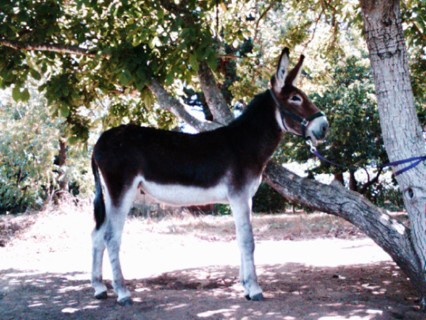
|
American Mammoth Jack
Donkeys, or Asno Americana, are descended from multiple breeds of donkeys
imported to the United States including Maltese, Poitou, Andalusian, Majorcan,
and Catalonian donkeys.
The males are typically 14 hands tall and the females are
about 13 hands. Mammoth Jacks have a draft horse-like build. They are a tall,
sturdy, and reliable animal, and compared frequently to work horses.
Mammoth Jacks can
...
|
|
 Amiatina Amiatina
|
|

|
Amiatina donkies, or Asino dell'Amiata in atalian, are from donkeys
from Tuscany in central Italy. They are particularly associated with Monte
Amiata in the provinces of Siena and Grosseto, but they are distributed
throughout Tuscany. There are also popular in Liguria and in Campania. They are one of the eight autochthonous donkey breeds of limited distribution recognized by the Ministero delle Politiche Agricole Alimentari e Forestali, the It
...
|
|
 Anatolia Anatolia
|
|
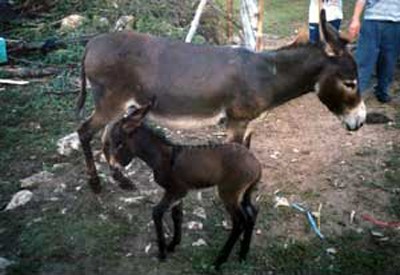
|
Anatolia Donkeys are also
known as Brown Donkeys and are mainly found throughout Turkey. They are usually
black and gray.
Anatolia Donkeys date back
beyond the Ottoman Empire; they were used alongside mules and horses to
transport goods along rivers, steep slopes, and rocky terrain. Most often they
were used by peasants to transport goods before the roads and bridges were
built. Today they are still extensively used in the East
...
|
|
 Andalusian Andalusian
|
|
|
The Andalusian, or
Andaluz, donkey was used by the Spanish Military for stud and kept their
bloodlines relatively pure over the years. Since the end of Franco’s reign, the
need for a quality donkey has declined and their numbers followed. This species
is endangered and threatened with extinction.
|
|
 Asinara Asinara
|
|

|
Asinara Donkeys
are from the isle of Asinara, Italy, where a colony of around a hundred still
live in the wild. They are small donkeys with a white coat, probably because of
an incomplete albinism.
The Asinara
donkey’s ancestors may have been
imported originally from Egypt by the Duke of Asinara in 1800. Evedently by the
end of the 19th century some white-coated donkeys lived on the island, probably
they were abandoned by the i
...
|
|
 Asino Viterbese Asino Viterbese
|
|
|
Asino Viterbese is a breed of donkey from Lazio in central Italy. It is particularly associated with the town and province of Viterbo from which it takes its name, and with the Monti della Tolfa and the town of Allumiere in the province of Rome. In 2007 it was reported by the FAO as extinct. In 2012 it was added to the list of autochthonous donkey breeds of limited distribution recognised by the Ministero delle Politiche Agricole Alimentari e Fo
...
|
|
 Australian Australian
|
|

|
Australian ‘Teamster’ Donkeys
evolved from Donkeys were mainly introduced into Australia in the nineteenth
century, especially for use in the hot, dry, harsh interior of the continent.
Donkeys in Australia had a mixture of blood from British as well as Nubian and
Arabian strains, all of which were imported into the country in the early
period of European settlement.
With the increasing use of
mechanized transport, donkeys largely
...
|
|
 Balearic Balearic
|
|
|
The Balearic Donkey, also known as the Mallorquina, is a breed of donkey that is native to the Balearic Islands of Spain, which include Mallorca, Menorca, and Ibiza. They are a small to medium-sized breed, with males averaging around 11 hands (44 inches) at the shoulder and females averaging around 10 hands (40 inches) at the shoulder. They have a short, thick coat that can be a variety of colors, including gray, black, and brown. They are known
...
|
|
 Balkan Balkan
|
|
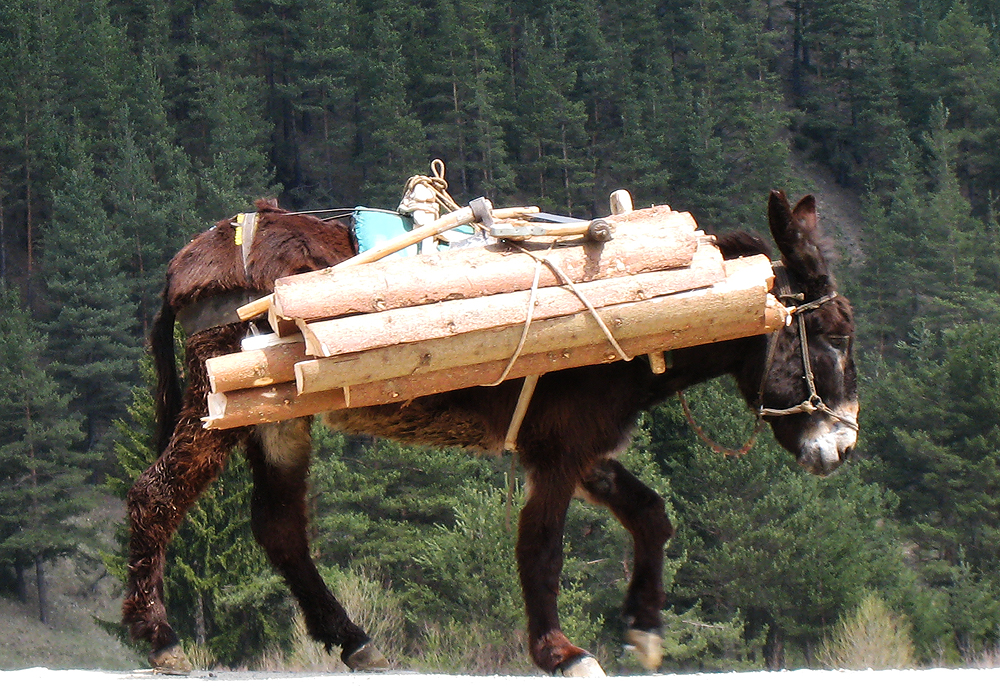
|
The Balkan donkey or mountain donkey ( Domaci balkanski magarac in Serbian), is a breed or group of breeds of domestic donkeys originating in the Balkan region. They are reported from Serbia and Montenegro.
A herd of about 120 Balkan donkeys in the Zasavica Reserve, Sremska Mitrovica, Serbia, are used to make the world's most expensive cheese, pule cheese.
|
|
 Barockesel Barockesel
|
|
|
Barockesel is a German word which means Baroque donkey in English. It is a breed of donkey that was developed in the Bavarian region of Germany. The breed is known for its small size and elegant appearance, with a refined head, long ears and a long, flowing mane and tail. They are typically between 8 and 10 hands (32-40 inches) high at the shoulder and come in a variety of colors, including gray, black, and brown. They are used mainly for riding
...
|
|
 Benderi Benderi
|
|
|
Benderi donkeys are a unique breed of donkey known for their athletic abilities and energetic personalities. These donkeys are medium-sized, with a sturdy build and strong legs that allow them to run and play for hours on end. They have a smooth coat of fur that ranges in color from light brown to black, and a long, bushy mane that adds to their regal appearance.
One of the standout characteristics of Benderi donkeys is their intellige
...
|
|
 Berry Grey Berry Grey
|
|
|
The Berry Grey is a breed of donkey known for its distinctive grey coat with berry-colored spots. This breed is known for its hardiness, intelligence, and gentle temperament, making it a popular choice for work on farms and ranches. They are also often used as therapy animals or as pets due to their gentle nature. Berry Greys are typically medium to large in size and can range from 12 to 14 hands in height. They have strong, sturdy legs and a mus
...
|
|
 Biyang Biyang
|
|
|
The Biyang donkey is a breed of donkey native to Biyang County in China. It is known for its small size, typically standing between 9 to 11 hands in height, and its distinctive black and white striped coat and large, floppy ears. Biyang donkeys are highly valued in their native region for their strength, intelligence, and endurance, and are often used for carrying heavy loads, plowing fields, and as pack animals. Despite their small size, they ar
...
|
|
 Bourbonnais Bourbonnais
|
|
|
The Bourbonnais donkey, also known as the Donkey of Bourbonnais, is a breed of donkey native to the region of Bourbonnais in central France. It is known for its medium size, typically standing between 12 to 14 hands in height, and its distinctive appearance, with a chestnut or bay coat color and black points on the legs, ears, and tail. Bourbonnais donkeys are highly valued for their strength, endurance, and versatility, and are often used for ca
...
|
|
 Bourik Bourik
|
|
|
The Bourik donkey, also known as the Haitian donkey, is a breed of donkey native to Haiti. It is known for its medium to large size, typically standing between 12 to 15 hands in height, and its distinctive appearance, with a range of coat colors including black, bay, chestnut, and gray. Bourik donkeys are highly valued for their strength, endurance, and versatility, and are often used for carrying heavy loads, plowing fields, and as pack animals.
...
|
|
 Brasil Brasil
|
|
|
The Brasil donkey, also known as the Brazilian donkey, is a breed of donkey native to Brazil. It is known for its medium to large size, typically standing between 14 to 16 hands in height, and its distinctive appearance, with a range of coat colors including black, bay, chestnut, and gray. Brasil donkeys are highly valued for their strength, endurance, and versatility, and are often used for carrying heavy loads, plowing fields, and as pack anima
...
|
|
 Bulgaro Bulgaro
|
|
|
The Bulgaro donkey, also known as the Bulgarian donkey, is a breed of donkey native to Bulgaria. It is known for its medium size, typically standing between 11 to 13 hands in height, and its distinctive appearance, with a range of coat colors including black, bay, chestnut, and gray. Bulgaro donkeys are highly valued for their strength, endurance, and versatility, and are often used for carrying heavy loads, plowing fields, and as pack animals. T
...
|
|
 Burro Burro
|
|
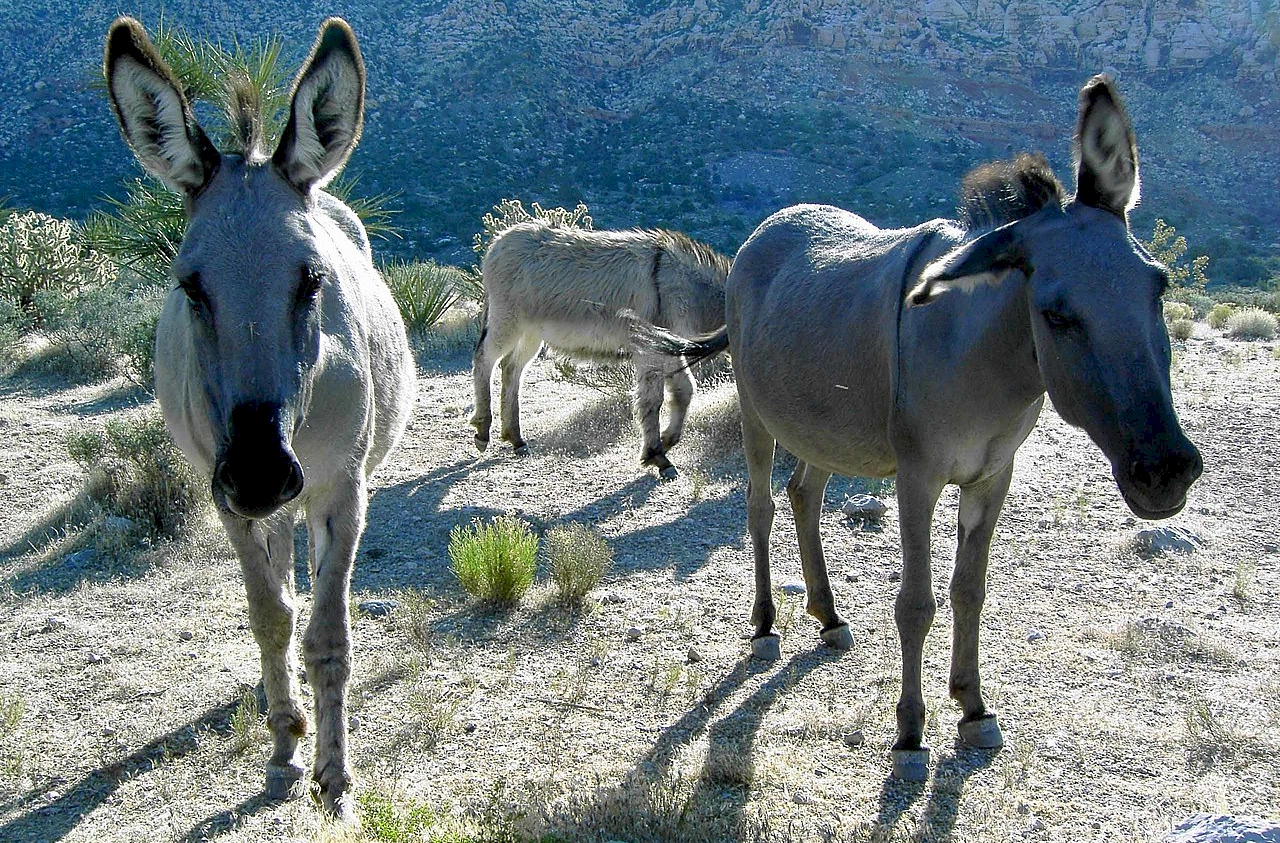
|
The Burro is a breed of donkey that is native to the southwestern United States and northern Mexico. They are known for their small size, typically standing between 9 to 11 hands in height, and their hardiness and adaptability. Burros are tough animals that are well suited to life in harsh, arid environments, and are known for their ability to survive on minimal food and water. They have strong, sturdy legs and a muscular build, and are often use
...
|
|
 Burro Burro
|
|
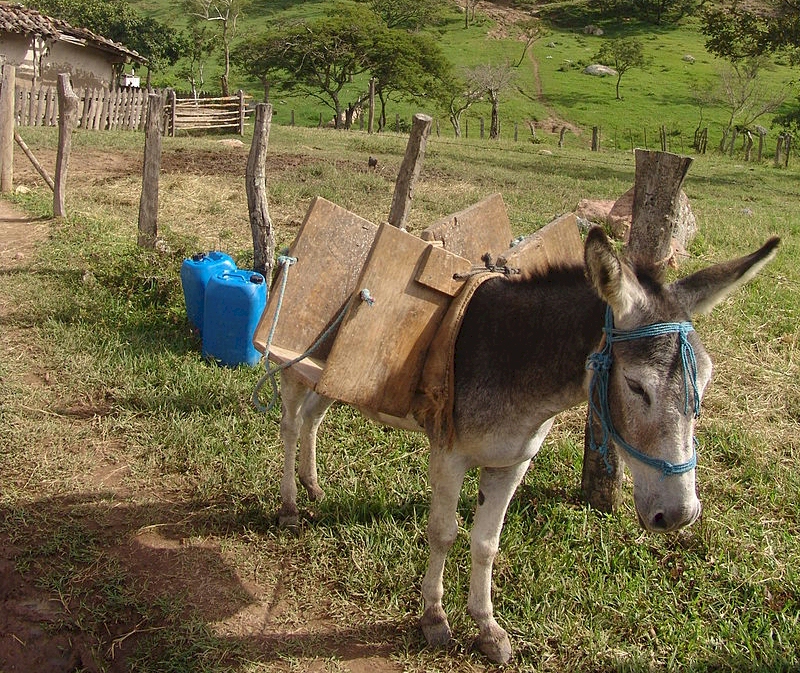
|
The Burro Kentucky, also known as the Kentucky Mountain Donkey or the Kentucky Donkey, is a breed of donkey native to the Appalachian region of the United States. It is known for its small to medium size, typically standing between 9 to 14 hands in height, and its distinctive appearance, with a range of coat colors including black, bay, chestnut, and gray. Burro Kentucky donkeys are highly valued for their strength, endurance, and versatility, an
...
|
|
 Burro Criollo Burro Criollo
|
|
|
The Burro Criollo, also known as the Criollo donkey, is a breed of donkey native to South America. It is known for its medium size, typically standing between 11 to 14 hands in height, and its distinctive appearance, with a range of coat colors including black, bay, chestnut, and gray. Burro Criollo donkeys are highly valued for their strength, endurance, and versatility, and are often used for carrying heavy loads, plowing fields, and as pack an
...
|
|
 Canindé Canindé
|
|
|
The Canindé donkey, also known as the Brazilian Sport Donkey, is a breed of donkey native to Brazil. It is known for its small to medium size, typically standing between 10 to 14 hands in height, and its distinctive appearance, with a range of coat colors including black, bay, chestnut, and gray. Canindé donkeys are highly valued for their strength, endurance, and versatility, and are often used for carrying heavy loads, plowing fields, and as pa
...
|
|
 Cardão Cardão
|
|
|
The Cardão donkey, also known as the Cardeal Donkey, is a breed of donkey native to Portugal. It is known for its medium to large size, typically standing between 12 to 15 hands in height, and its distinctive appearance, with a range of coat colors including black, bay, chestnut, and gray. Cardão donkeys are highly valued for their strength, endurance, and versatility, and are often used for carrying heavy loads, plowing fields, and as pack anima
...
|
|
 Castel Morrone Castel Morrone
|
|
|
The Castel Morrone donkey is a breed of donkey native to the Castel Morrone region of Italy. It is known for its medium to large size, typically standing between 12 to 15 hands in height, and its distinctive appearance, with a range of coat colors including black, bay, chestnut, and gray. Castel Morrone donkeys are highly valued for their strength, endurance, and versatility, and are often used for carrying heavy loads, plowing fields, and as pac
...
|
|
 Catalan Catalan
|
|
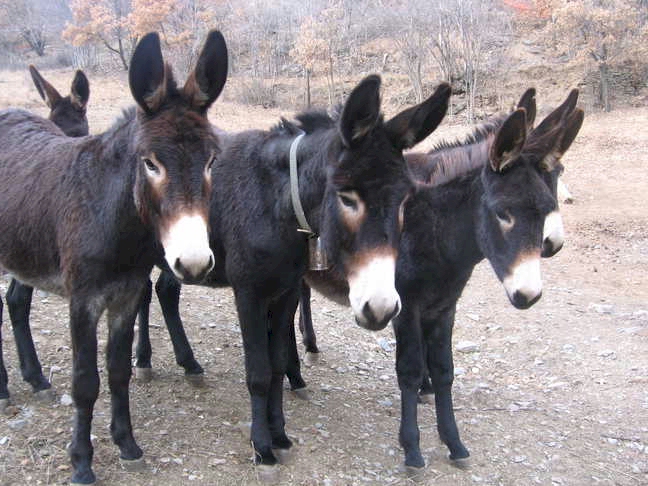
|
The Catalan donkey, also known as the Asno Catalan, is a breed of donkey native to Catalonia in northeastern Spain. It is known for its small to medium size, typically standing between 10 to 14 hands in height, and its distinctive appearance, with a range of coat colors including black, bay, chestnut, and gray. Catalan donkeys are highly valued for their strength, endurance, and versatility, and are often used for carrying heavy loads, plowing fi
...
|
|
 Chigetai Chigetai
|
|
|
The Chigetai donkey, also known as the Mongolian Wild Ass, is a breed of wild donkey native to Mongolia. It is known for its medium to large size, typically standing between 12 to 15 hands in height, and its distinctive appearance, with a sandy brown or grayish-brown coat and a black mane and tail. Chigetai donkeys are highly valued for their strength, endurance, and versatility, and are often used for carrying heavy loads, plowing fields, and as
...
|
|
 China North China North
|
|
|
The China North Donkey, also known as the Shandong donkey, is a breed of donkey native to the Shandong Province in northeastern China. It is known for its medium size, typically standing between 11 to 13 hands in height, and its distinctive appearance, with a range of coat colors including black, bay, chestnut, and gray. China North donkeys are highly valued for their strength, endurance, and versatility, and are often used for carrying heavy loa
...
|
|
 Cotentin Cotentin
|
|
|
The Cotentin donkey, or Ane du Cotentin, comes from Lower-Normandy and was once used to transport cow’s milk. Due to modernization of agriculture in the mid-20th century their numbers dwindled. Thanks to modern appreciation for the bloodlines & the creation of a breed registry in 1997 their numbers continue to grow.
|
|
 Creole Creole
|
|
|
The Creole donkey, also known as the "Florida Cracker Donkey," is a breed of donkey native to the southern United States, particularly Florida. It is known for its medium to small size, typically standing between 9 to 12 hands in height, and its distinctive appearance, with a range of coat colors including black, bay, chestnut, and gray. Creole donkeys are highly valued for their strength, endurance, and versatility, and are often used for carryi
...
|
|
 Criollo Criollo
|
|
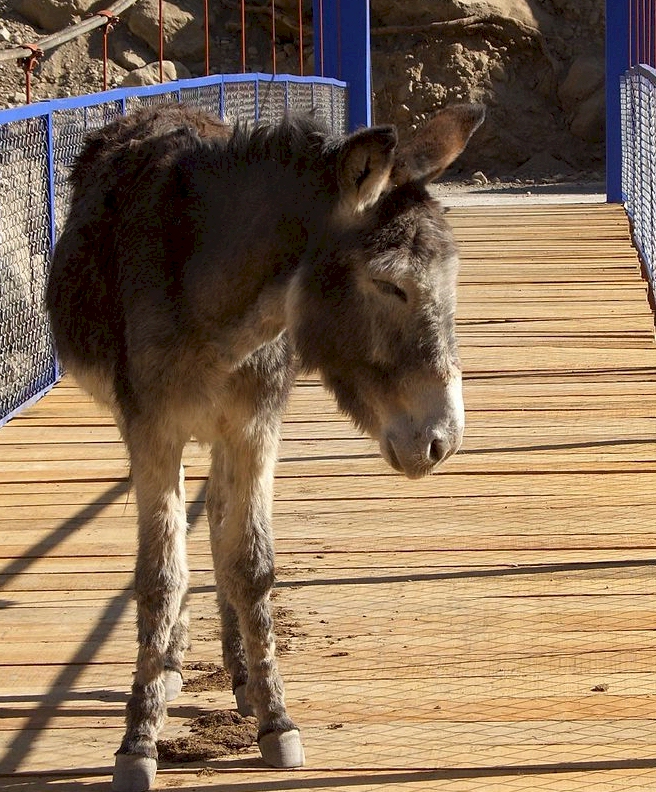
|
The Criollo donkey, also known as the "American Wild Ass," is a breed of donkey native to the Americas, particularly Mexico and the southwestern United States. It is known for its small to medium size, typically standing between 10 to 13 hands in height, and its distinctive appearance, with a range of coat colors including black, bay, chestnut, and gray. Criollo donkeys are highly valued for their strength, endurance, and versatility, and are oft
...
|
|
 Cyprus Cyprus
|
|
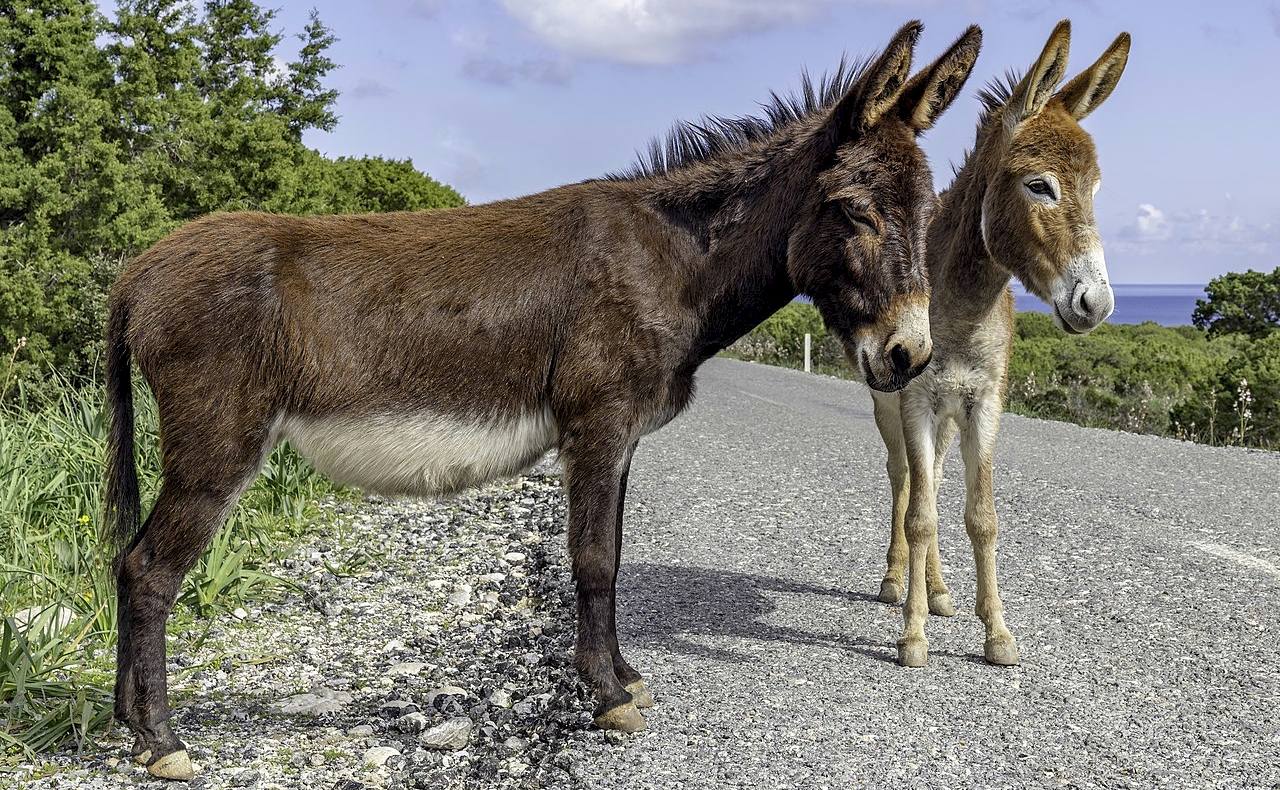
|
Cyprus donkeys are from the Mediterranean island of Cyprus. There are two principal strains: a large dark-coloured type with a pale belly, probably of European origin; and a small gray African type which represents about 20% of the total population, which in 2002 was estimated at 2200–2700.
The Cyprus donkey was an integral component of rural life from prehistoric times until the 20th century. Archimandrite Kyprianos in 1788 records th
...
|
|
 Dagestanskaya Dagestanskaya
|
|
|
The Dagestanskaya donkey, also known as the Dagestan donkey or the Dagestan wild ass, is a breed of donkey found in the Dagestan region of Russia. They are known for their unique appearance, with a distinctive long, thick coat and large, rounded ears. This breed is considered to be one of the few remaining wild ass populations, and is believed to be one of the ancestral populations of domestic donkeys. The Dagestan donkey is relatively small, wit
...
|
|
 Damascus Damascus
|
|
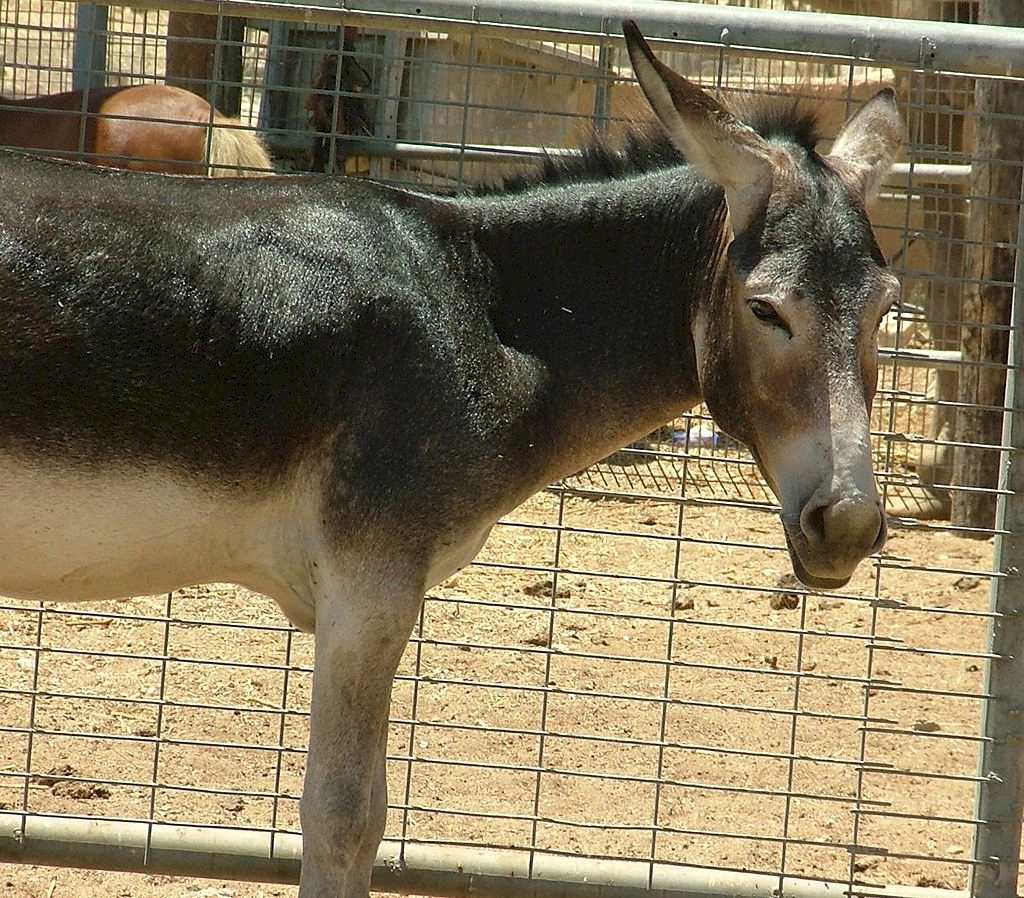
|
The Damascus donkey, also known as the Syrian donkey or the Damascene donkey, is a breed of donkey indigenous to the Middle East, particularly the region surrounding Damascus, Syria. This breed is known for its hardiness and ability to withstand harsh climates and rough terrain. They are typically medium to large in size, with a height ranging from 14 to 15 hands (56 to 60 inches) at the shoulder. Damascus donkeys are well-built with strong legs
...
|
|
 Dezhou Dezhou
|
|
|
The Dezhou donkey, also known as the Dezhou horse-donkey, is a breed of donkey indigenous to the Shandong province of China. They are known for their strength and durability, as well as their ability to carry heavy loads over long distances. Dezhou donkeys are medium-sized, with a height ranging from 13 to 14 hands (52 to 56 inches) at the shoulder. They have a muscular build and strong legs, and are known for their smooth gait and good temperame
...
|
|
 Dongola Dongola
|
|
|
The Dongola donkey, also known as the Dongolawi donkey, is a breed of donkey found in the northern regions of Sudan, including the Dongola region for which it is named. Dongola donkeys are known for their strength and endurance, making them well-suited for life in hot and arid environments. They are typically medium to large in size, with a height ranging from 14 to 15 hands (56 to 60 inches) at the shoulder. Dongola donkeys have a muscular build
...
|
|
 Donkeys Donkeys
|
|

|
It is believed that the first donkeys came to North America with Christopher
Columbus in 1495. Donkeys were highly valued as sires for mules. Jacks, or the males were primarily used as pack animals and the Jennies were used for riding.
Donkeys were also used in Mexico after the conquest of the Aztecs in 1521. Mules were used in silver mines and for breeding mules.
Donkeys were used largely in the western United States durin
...
|
|
 Dwarf Dwarf
|
|
|
The Dwarf Donkey of Graciosa is a breed of miniature donkey found on the island of Graciosa in the Azores, Portugal. They are known for their small size and gentle personalities, making them popular as pets and therapy animals. Dwarf Donkeys of Graciosa typically stand at a height of less than 36 inches (9 hands) at the shoulder. They have a compact, sturdy build and are known for their smooth gait and good temperaments. This breed comes in a var
...
|
|
 Egypt Baladi Egypt Baladi
|
|
|
The Egypt Baladi donkey, also known as the Egyptian Baladi or simply the Baladi, is a breed of donkey found in Egypt. They are known for their strength, endurance, and versatility, and are used for a variety of purposes, including transportation, agriculture, and as pack animals. Baladi donkeys are typically medium to large in size, with a height ranging from 14 to 15 hands (56 to 60 inches) at the shoulder. They have a muscular build and strong
...
|
|
 Encartaciones Encartaciones
|
|
|
The Encartaciones donkey, also known as the Encartado donkey, is a breed of donkey found in the Basque Country of northern Spain. They are known for their strength, versatility, and adaptability, and are used for a variety of purposes, including transportation, agriculture, and as pack animals. Encartaciones donkeys are typically medium to large in size, with a height ranging from 14 to 15 hands (56 to 60 inches) at the shoulder. They have a musc
...
|
|
 English English
|
|

|
Historically, the donkey was never used extensively in Britain – except in Ireland, where it became the principal draught animal for cottagers and smallholders throughout the country.
Eggs and butter, which were the chief produce of the widespread small farms, were brought to market weekly by a patient donkey harnessed to a small cart, usually driven by the farmer's wife.
While some breeders refer to their donkeys as “Irish”
...
|
|
 Etbai Etbai
|
|
|
The Etbai donkey is a breed of donkey found in the Oromia region of Ethiopia. They are known for their strength and endurance, and are used for a variety of purposes, including transportation, agriculture, and as pack animals. Etbai donkeys are typically medium to large in size, with a height ranging from 14 to 15 hands (56 to 60 inches) at the shoulder. They have a muscular build and strong legs, and are known for their smooth gait and good temp
...
|
|
 Ezel Ezel
|
|
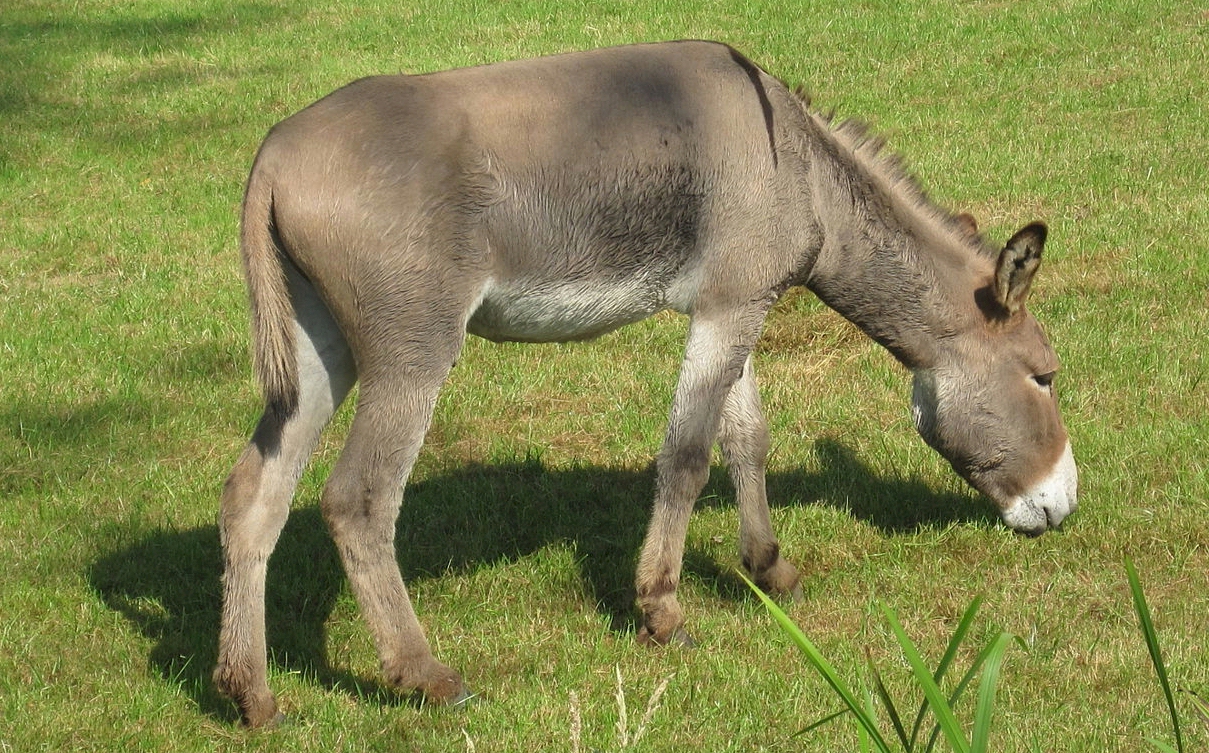
|
The Ezel donkey, also known as the Belgian Draft Donkey, is a breed of donkey found in Belgium. They are known for their strength and versatility, and are used for a variety of purposes, including transportation, agriculture, and as pack animals. Ezel donkeys are typically large in size, with a height ranging from 15 to 16 hands (60 to 64 inches) at the shoulder. They have a muscular build and strong legs, and are known for their smooth gait and
...
|
|
 Georgian Georgian
|
|
|
The Georgian donkey is a breed of donkey found in the country of Georgia. They are known for their strength, endurance, and versatility, and are used for a variety of purposes, including transportation, agriculture, and as pack animals. Georgian donkeys are typically medium to large in size, with a height ranging from 14 to 15 hands (56 to 60 inches) at the shoulder. They have a muscular build and strong legs, and are known for their smooth gait
...
|
|
 Guanzhong Guanzhong
|
|
|
The Guanzhong donkey, also known as the Guanzhong Small Eared Donkey, is a breed of donkey found in the Shaanxi province of China. They are known for their small size, compact build, and distinctive "small ear" appearance. Guanzhong donkeys are typically small in size, with a height ranging from 12 to 13 hands (48 to 52 inches) at the shoulder. They have a strong, muscular build, and are known for their smooth gait and good temperaments. This bre
...
|
|
 Hamadan Hamadan
|
|
|
The Hamadan donkey is a breed of donkey found in the Hamadan province of Iran. They are known for their strength, endurance, and versatility, and are used for a variety of purposes, including transportation, agriculture, and as pack animals. Hamadan donkeys are typically medium to large in size, with a height ranging from 14 to 15 hands (56 to 60 inches) at the shoulder. They have a muscular build and strong legs, and are known for their smooth g
...
|
|
 Hassawi Hassawi
|
|
|
The Hassawi donkey is a breed of donkey found in the Al Hassa region of Saudi Arabia. They are known for their strength, endurance, and versatility, and are used for a variety of purposes, including transportation, agriculture, and as pack animals. Hassawi donkeys are typically medium to large in size, with a height ranging from 14 to 15 hands (56 to 60 inches) at the shoulder. They have a muscular build and strong legs, and are known for their s
...
|
|
 Hinnie Hinnie
|
|
|
A hinnie or hinny is a domestic hybrid
produced by a horse stallion (father) and a jenny
donkey (mother). It is the opposite cross to the common mule, which is the product of a jack donkey (father)and a horse mare (mother).
There are both male and female hinnies. A male hinny is
properly called ahorse
hinny, and a female hinny is properly called amare
hinny. In England, a hinny is commonly called ajennet.
|
|
 Huaibei Huaibei
|
|
|
The Huaibei donkey, also known as the Huai Donkey, is a breed of donkey found in the Anhui province of China. They are known for their strength, endurance, and versatility, and are used for a variety of purposes, including transportation, agriculture, and as pack animals. Huaibei donkeys are typically medium to large in size, with a height ranging from 14 to 15 hands (56 to 60 inches) at the shoulder. They have a muscular build and strong legs, a
...
|
|
 Indian Indian
|
|
|
The Indian donkey, also known as the Spotted or Indian Wild Ass, is a breed of donkey found in India. They are known for their strength, endurance, and versatility, and are used for a variety of purposes, including transportation, agriculture, and as pack animals. Indian donkeys are typically medium to large in size, with a height ranging from 14 to 15 hands (56 to 60 inches) at the shoulder. They have a muscular build and strong legs, and are kn
...
|
|
 Iranian Iranian
|
|
|
The Iranian donkey, also known as the Shazandan or the Azeri donkey, is a breed of donkey native to Iran. It is known for its strong and sturdy body, as well as its endurance and adaptability to various terrains and climates. These donkeys are medium-sized, typically standing between 13 to 15 hands high and weighing between 500 to 600 pounds. They have a distinctive appearance with long, thick, and shaggy fur that can come in a variety of colors,
...
|
|
 Istarski Magarac Istarski Magarac
|
|
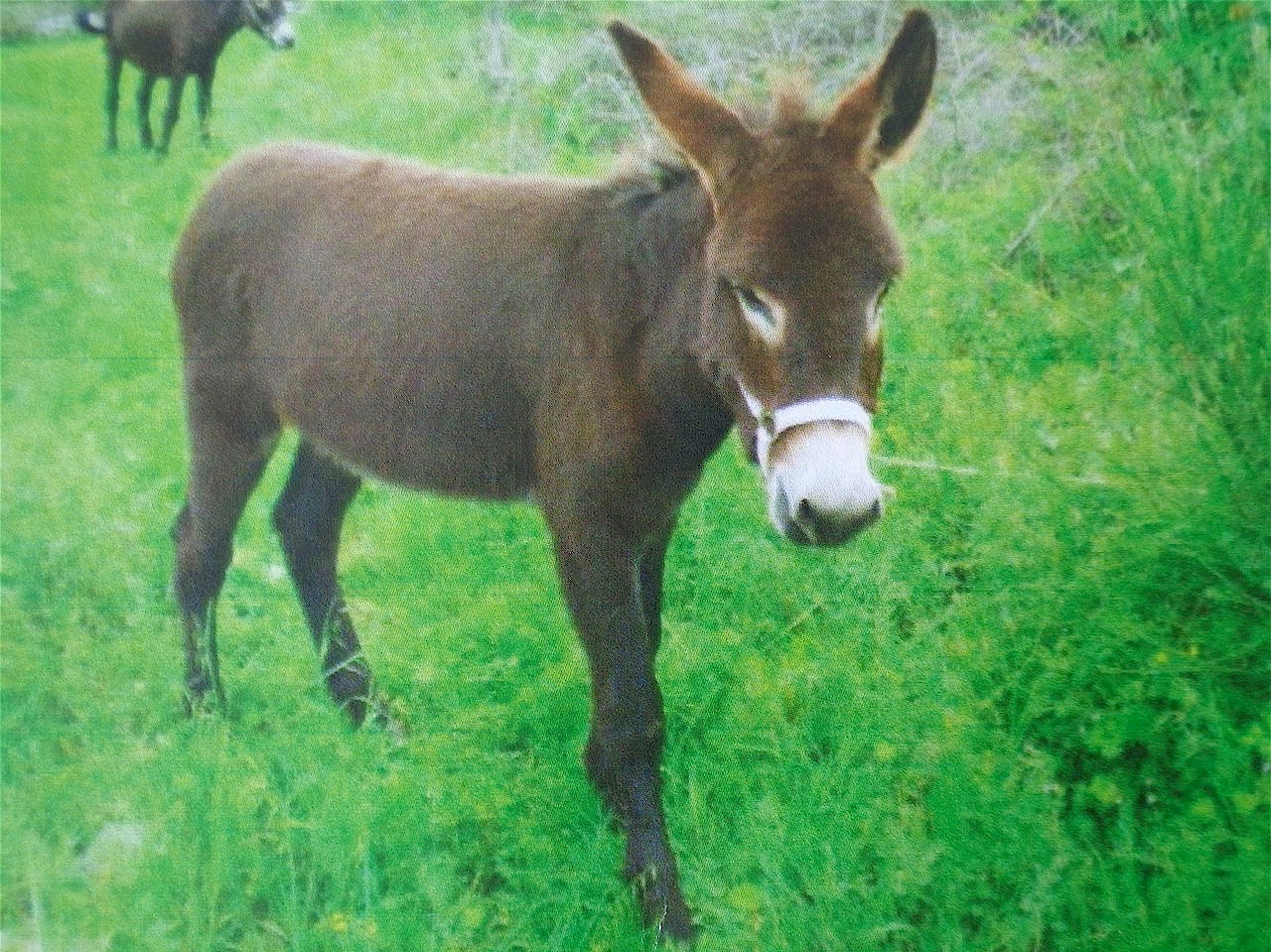
|
The Istarski Magarac is a breed of donkey from the Istria region of Croatia. It is known for its distinctive appearance, with a long, slender neck and a muscular, athletic build. These donkeys typically stand between 13 to 14 hands high and weigh between 400 to 600 pounds. They come in a variety of colors, including grey, black, and brown. The Istarski Magarac is known for its strength and endurance, and it is commonly used for carrying heavy loa
...
|
|
 Italian Italian
|
|
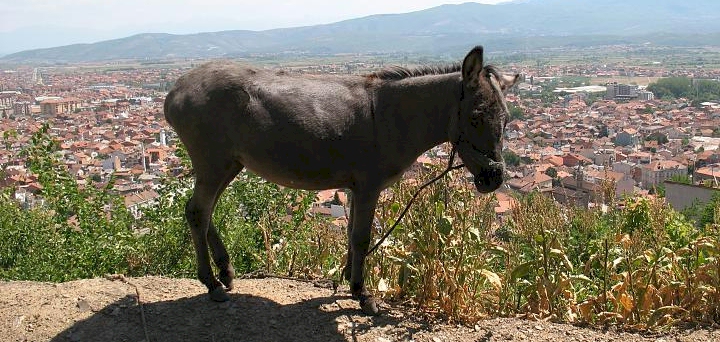
|
The Italian donkey, also known as the Asino Italiano, is a breed of donkey that originated in Italy. It is a small to medium-sized breed, typically standing between 9 to 14 hands high and weighing between 400 to 600 pounds. The Italian donkey is known for its distinctive appearance, with a strong, muscular body and a narrow, angular head. They come in a variety of colors, including grey, black, and brown. The breed is highly valued for its intell
...
|
|
 Jiami Jiami
|
|
|
The Jiami donkey is a breed of donkey native to the Jiami region of China. It is a medium-sized breed, typically standing between 12 to 14 hands high and weighing between 400 to 550 pounds. Jiami donkeys are known for their strong and sturdy bodies, as well as their hardworking and intelligent nature. They come in a variety of colors, including grey, black, and brown. The Jiami donkey is valued for its versatility and is used for a variety of tas
...
|
|
 Jinnan Jinnan
|
|
|
The Jinnan donkey is a breed of donkey native to the Jinnan region of China. It is a medium-sized breed, typically standing between 12 to 14 hands high and weighing between 400 to 550 pounds. The Jinnan donkey is known for its strong and sturdy body, as well as its hardworking and intelligent nature. They come in a variety of colors, including grey, black, and brown. The breed is highly valued for its versatility and is used for a variety of task
...
|
|
 Kakhetinskaya Kakhetinskaya
|
|
|
The Kakhetinskaya donkey is a breed of donkey native to the Kakheti region of Georgia. It is a medium-sized breed, typically standing between 13 to 14 hands high and weighing between 400 to 600 pounds. The Kakhetinskaya donkey is known for its strong and sturdy body, as well as its hardworking and intelligent nature. They come in a variety of colors, including grey, black, and brown. The breed is highly valued for its versatility and is used for
...
|
|
 Kara-Kalpakskaya Kara-Kalpakskaya
|
|
|
The Kara-Kalpakskaya donkey is a breed of donkey native to the Kara-Kalpak region of Uzbekistan. It is a medium-sized breed, typically standing between 12 to 14 hands high and weighing between 400 to 550 pounds. The Kara-Kalpakskaya donkey is known for its strong and sturdy body, as well as its hardworking and intelligent nature. They come in a variety of colors, including grey, black, and brown. The breed is highly valued for its versatility and
...
|
|
 Karakaçan Karakaçan
|
|
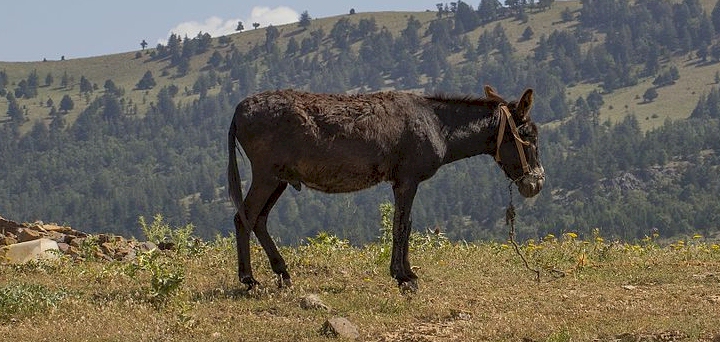
|
The Karakaçan donkey is a breed of donkey native to the Karakaçan region of Turkey. It is a medium-sized breed, typically standing between 12 to 14 hands high and weighing between 400 to 550 pounds. The Karakaçan donkey is known for its strong and sturdy body, as well as its hardworking and intelligent nature. They come in a variety of colors, including grey, black, and brown. The breed is highly valued for its versatility and is used for a varie
...
|
|
 Kashan Kashan
|
|
|
The Kashan donkey is a breed of donkey native to the Kashan region of Iran. It is a medium-sized breed, typically standing between 12 to 14 hands high and weighing between 400 to 550 pounds. The Kashan donkey is known for its strong and sturdy body, as well as its hardworking and intelligent nature. They come in a variety of colors, including grey, black, and brown. The breed is highly valued for its versatility and is used for a variety of tasks
...
|
|
 Kassala Kassala
|
|
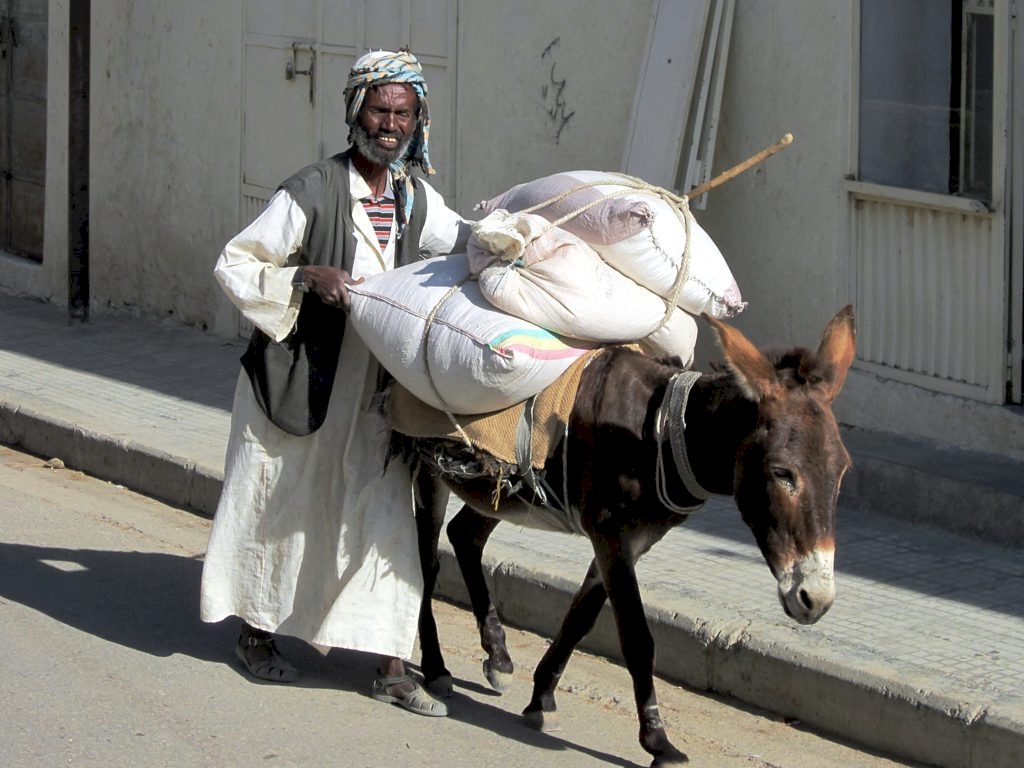
|
The Kassala donkey is a breed of donkey native to the Kassala region of Sudan. It is a medium-sized breed, typically standing between 12 to 14 hands high and weighing between 400 to 550 pounds. The Kassala donkey is known for its strong and sturdy body, as well as its hardworking and intelligent nature. They come in a variety of colors, including grey, black, and brown. The breed is highly valued for its versatility and is used for a variety of t
...
|
|
 Kazakhskaya Kazakhskaya
|
|
|
The Kazakhskaya donkey is a breed of donkey native to Kazakhstan. It is a medium-sized breed, typically standing between 12 to 14 hands high and weighing between 400 to 550 pounds. The Kazakhskaya donkey is known for its strong and sturdy body, as well as its hardworking and intelligent nature. They come in a variety of colors, including grey, black, and brown. The breed is highly valued for its versatility and is used for a variety of tasks, inc
...
|
|
 Kirgizskaya Kirgizskaya
|
|
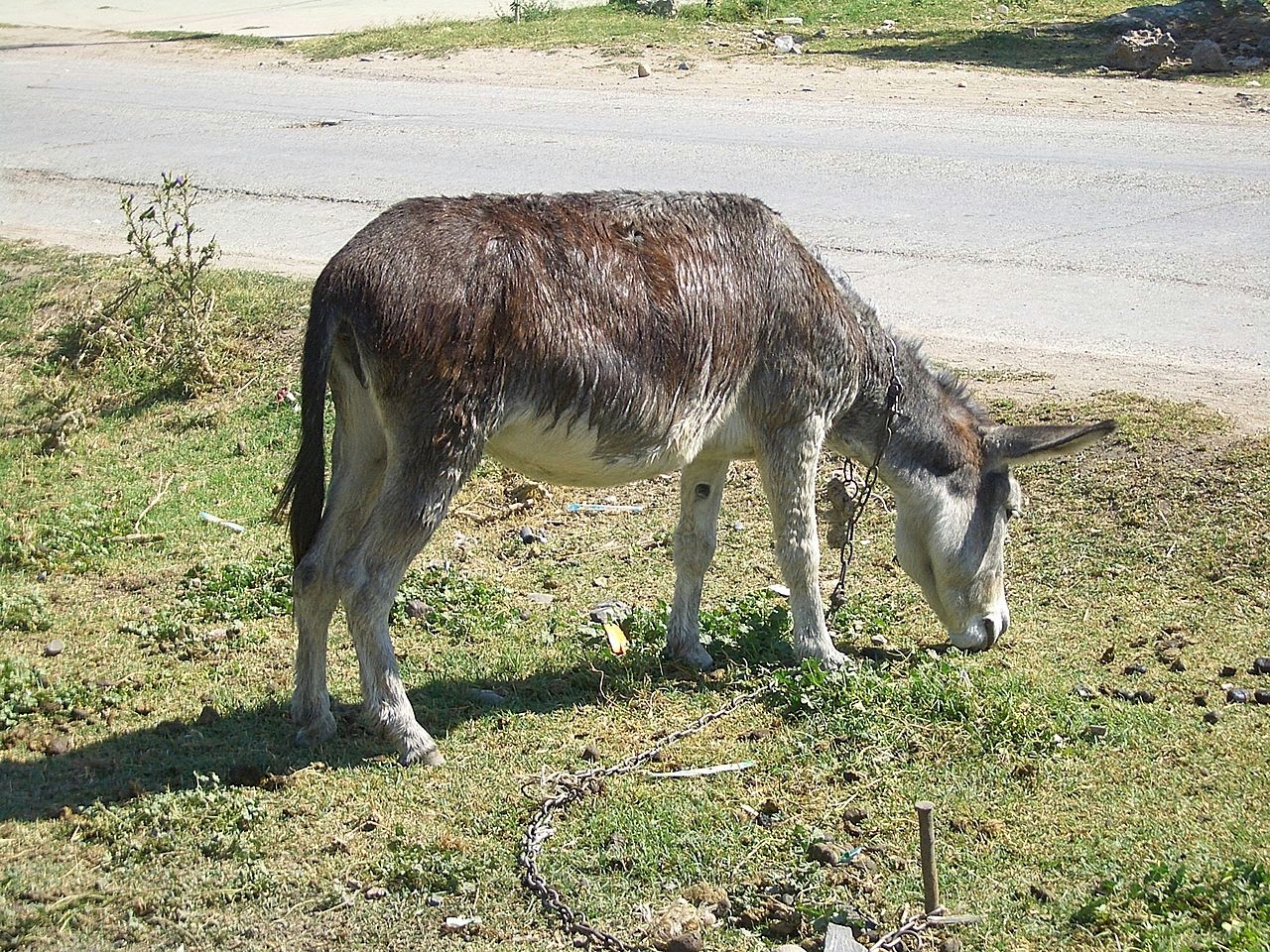
|
The Kirgizskaya donkey is a breed of donkey native to Kyrgyzstan. It is a medium-sized breed, typically standing between 12 to 14 hands high and weighing between 400 to 550 pounds. The Kirgizskaya donkey is known for its strong and sturdy body, as well as its hardworking and intelligent nature. They come in a variety of colors, including grey, black, and brown. The breed is highly valued for its versatility and is used for a variety of tasks, inc
...
|
|
 Kulun Kulun
|
|
|
The Kulun donkey is a breed of donkey native to Mongolia. It is a medium-sized breed, typically standing between 12 to 14 hands high and weighing between 400 to 550 pounds. The Kulun donkey is known for its strong and sturdy body, as well as its hardworking and intelligent nature. They come in a variety of colors, including grey, black, and brown. The breed is highly valued for its versatility and is used for a variety of tasks, including plowing
...
|
|
 Large Standard Large Standard
|
|
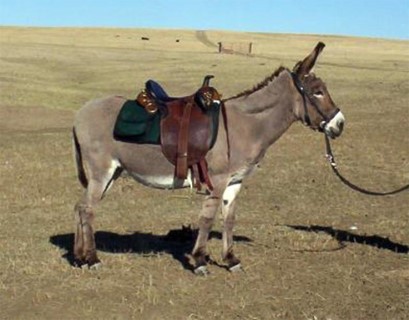
|
The Large Standard donkey is a breed of donkey known for its large size and versatility. They typically stand between 14 to 16 hands high, making them one of the tallest breeds of donkey, and weigh between 800 to 1,200 pounds. The breed is known for its strong and sturdy body, making it suitable for heavy work such as plowing fields, carrying heavy loads, and serving as a pack animal. They also have a gentle and intelligent nature, making them po
...
|
|
 Liangzhou Liangzhou
|
|
|
The Liangzhou donkey is a breed of donkey native to the Liangzhou region of China. It is a medium-sized breed, typically standing between 12 to 14 hands high and weighing between 400 to 550 pounds. The Liangzhou donkey is known for its strong and sturdy body, as well as its hardworking and intelligent nature. They come in a variety of colors, including grey, black, and brown. The breed is highly valued for its versatility and is used for a variet
...
|
|
 Libyan Libyan
|
|
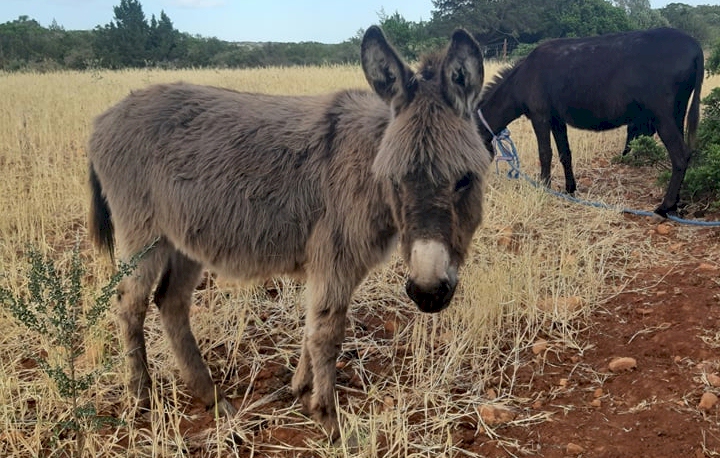
|
The Libyan donkey is a breed of donkey native to Libya. It is a medium-sized breed, typically standing between 12 to 14 hands high and weighing between 400 to 550 pounds. The Libyan donkey is known for its strong and sturdy body, as well as its hardworking and intelligent nature. They come in a variety of colors, including grey, black, and brown. The breed is highly valued for its versatility and is used for a variety of tasks, including plowing
...
|
|
 Magyar Parlagi Szamár Magyar Parlagi Szamár
|
|
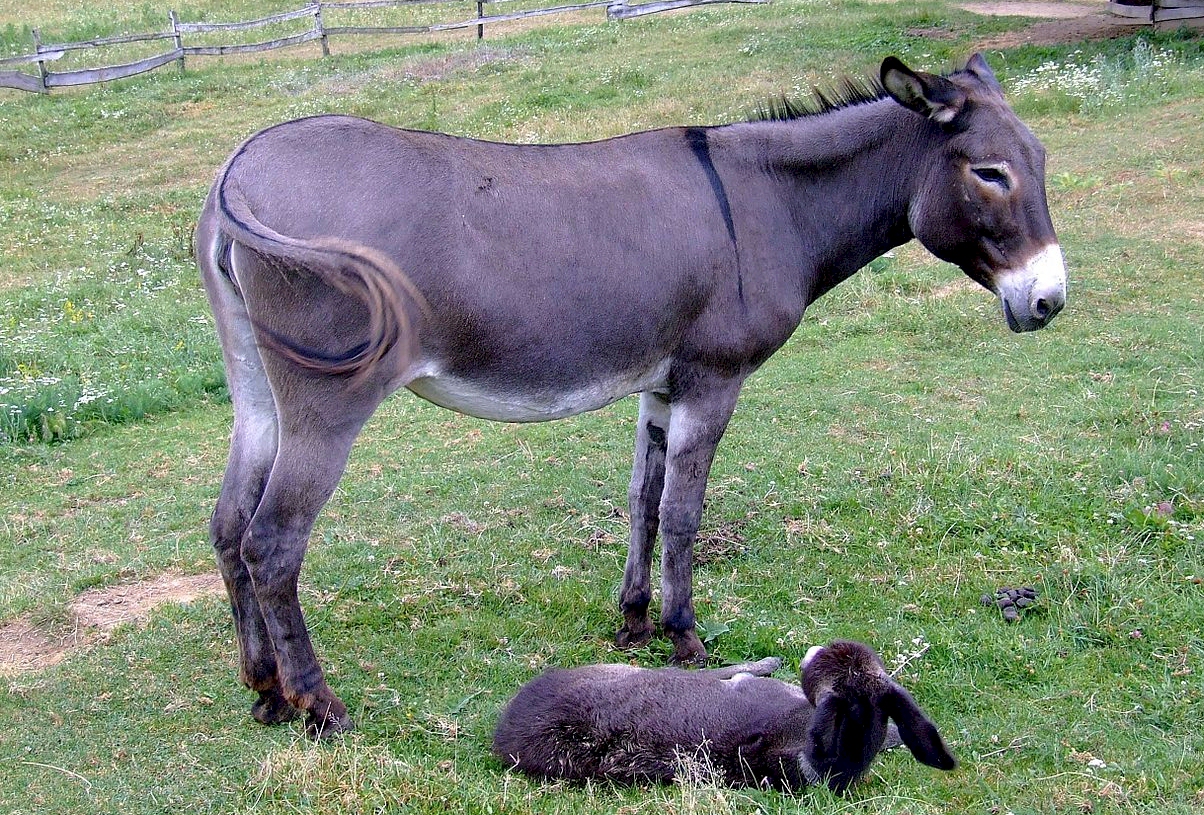
|
The Magyar Parlagi Szamár, also known as the Hungarian Half-bred Donkey, is a breed of donkey native to Hungary. It is a medium-sized breed, typically standing between 12 to 14 hands high and weighing between 400 to 550 pounds. The Magyar Parlagi Szamár is known for its strong and sturdy body, as well as its hardworking and intelligent nature. They come in a variety of colors, including grey, black, and brown. The breed is highly valued for its v
...
|
|
 Majorera Majorera
|
|
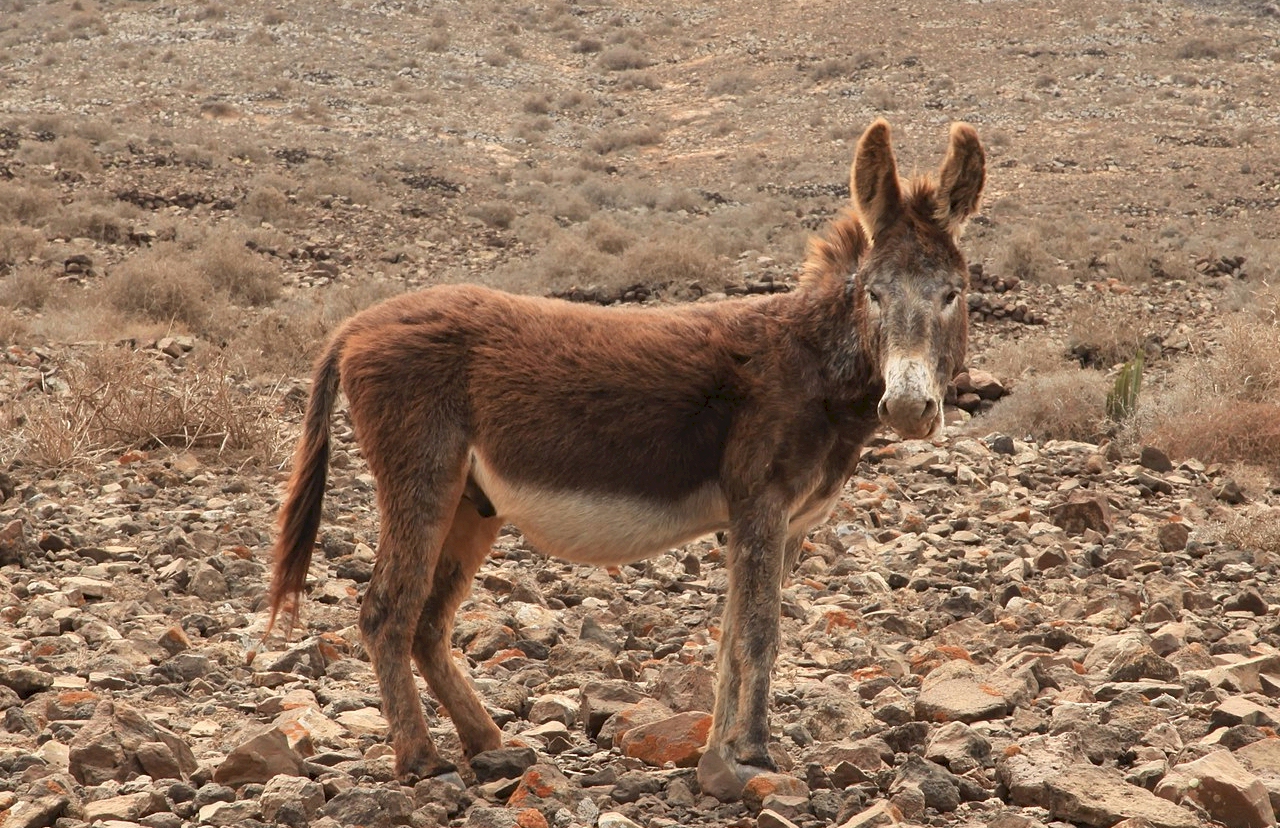
|
The Majorera is an endangered breed of small domestic donkey indigenous to the Canary Islands, the Spanish archipelago in the Atlantic off the coast of southern Morocco. There are approximately 200 of the donkeys; almost all are on the island of Fuerteventura, with a small number on Lanzarote. The name derives from Majorero, a demonym for the people of Fuerteventura. The Majorera is a small donkey of African origin, and is the only equine breed o
...
|
|
 Maltese Maltese
|
|
|
The Maltese donkey is a breed of donkey native to the Maltese Islands. It is a small-sized breed, typically standing between 9 to 11 hands high and weighing between 200 to 400 pounds. The Maltese donkey is known for its compact and sturdy body, as well as its friendly and docile temperament. They come in a variety of colors, including grey, black, and brown. The breed is highly valued for its versatility and is used for a variety of tasks, includ
...
|
|
 Martina Franca Martina Franca
|
|

|
Martina Franca Donkeys are large size donkeys (135-160cm high at the withers) are from Apulia, Italy. Most likely they were developed by crossbreeding local dark-coated donkeys with donkeys from Catalogna imported into the area at the beginning of the 16 century.
They have a quite lively temperament. They are well-adapted to difficult and rocky ground and are used as beasts of burden.
Content and Photo source: Agraria.org.
|
|
 Mary Mary
|
|
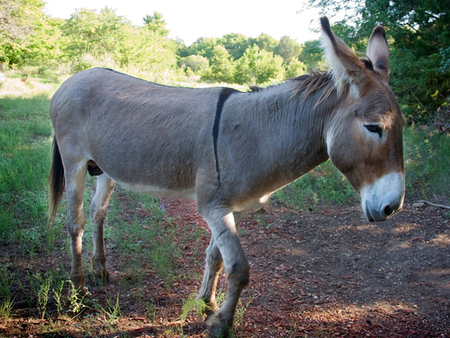
|
Mary donkeys are large donkeys from the Ashkhaad and Mary regions of Turkmenia. There are both a large and small version of the Mary donkey. Large versions of the male Mary donkey are typically 119-120cm, and females are 116-118cm. Fully grown Mary donkeys often weigh around 650 pounds and can carry 150-275 pounds.
Mary Donkeys are closely related to the Iranian Hamadan donkeys whose descendants can also be found in Azerbaijan.
...
|
|
 Meskheti-Dzhavakhetskaya Meskheti-Dzhavakhetskaya
|
|
|
The Meskheti-Dzhavakhetskaya is a breed of donkey that is native to the Meskheti region in Georgia. It is a small-sized breed, typically standing between 9 to 11 hands high and weighing between 200 to 400 pounds. The Meskheti-Dzhavakhetskaya is known for its compact and sturdy body, as well as its friendly and docile temperament. They come in a variety of colors, including grey, black, and brown. The breed is highly valued for its versatility and
...
|
|
 Miniature Miniature
|
|
|
Miniature donkeys are smaller than the standard donkey and
are thought to have originated in Sardinjan, the second largest island in the
Mediterranean Sea. While not considered miniature by their country of origin,
these donkeys were quite smaller than typical donkey. Miniature donkeys stand
between 36 – 40 inches tall when full grown. In the early 1900’s seven
miniature donkey s were brought to the United States by Robert Green. The first
...
|
|
 Moroccan Moroccan
|
|
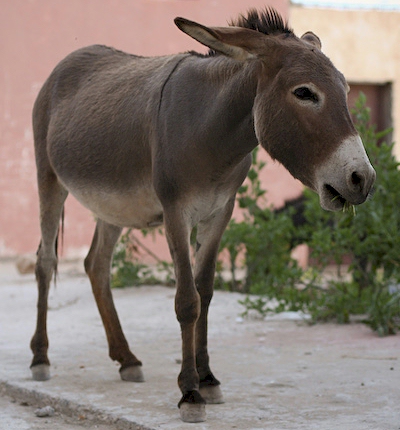
|
The Moroccan donkey, also known as the Barb or the Atlas donkey, is a breed of donkey that is native to Morocco. It is a medium-sized breed, typically standing between 12 to 14 hands high and weighing between 600 to 800 pounds. The Moroccan donkey is known for its strong and sturdy build, as well as its hardworking and patient nature. They come in a variety of colors, including grey, black, and brown. The breed is highly valued for its versatilit
...
|
|
 Mule Mule
|
|

|
A mule is the offspring of a male donkey (Jack) and a female horse (Mare). Mules can be lightweight, medium weight, or when produced from draft horse mares, of moderately heavy weight. Mules are more patient, hardy, and long-lived than horses, and are less obstinate and more intelligent than donkeys.
|
|
 Muscat Muscat
|
|
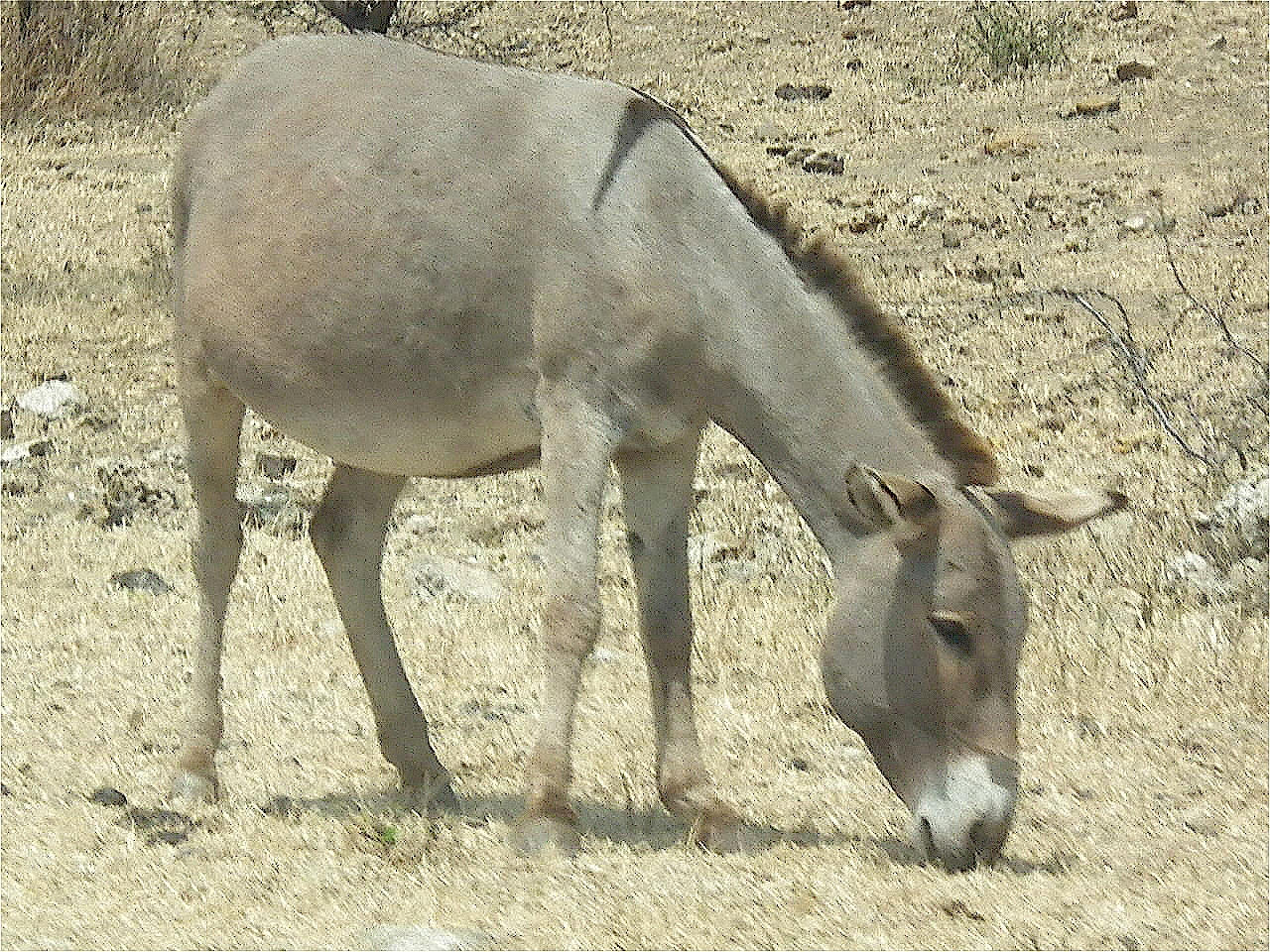
|
The Muscat donkey is a breed of domestic donkey that is indigenous to the Muscat region of Oman. It is a small to medium-sized breed, with a compact and sturdy build. They have a distinctive appearance, with long ears and a convex profile. The breed comes in a variety of colors, including gray, black, and brown. They are known for their good temperaments and are often used as pack animals in their native region.
|
|
 Nordestina Nordestina
|
|
|
The Nordestina donkey is a breed of domestic donkey that is native to the northeastern region of Brazil. It is a medium to large-sized breed, with a well-proportioned build and a distinctive appearance. They have long ears, a convex profile, and a strong neck. They come in a variety of colors including black, gray, and brown. Nordestina donkeys are known for their strength and endurance and are used for transportation, draft work, and as pack ani
...
|
|
 Norman Norman
|
|
|
The Norman donkey, also known as the âne normand, is a breed of domestic donkey that is native to the Normandy region of France. It is a medium to large-sized breed, with a well-proportioned build and a distinctive appearance. They have long ears and a convex profile, and come in a variety of colors including gray, brown, and black. Norman donkeys are known for their strength and endurance, and are used for draft work, transportation, and as pack
...
|
|
 Ogaden Ogaden
|
|
|
The Ogaden donkey is a breed of domestic donkey that is native to the Ogaden region of Ethiopia. It is a medium to large-sized breed, with a well-proportioned build and a distinctive appearance. They have long ears, a convex profile, and a strong neck. They come in a variety of colors including gray, brown, and black. Ogaden donkeys are known for their strength and endurance and are used for transportation, draft work, and as pack animals in thei
...
|
|
 Pantelleria Pantelleria
|
|

|
Pantelleria
Donkeys are an ancient breed from Pantelleria island, Italy, where they were
common until a few decades ago.
Pantelleria
Donkeys are very strong, in the past the were used to carry extremely heavy
loads around the paths of the island. They represented an important resource
for the island and Trapani province. The hybrids (mules) were highly
appreciated abroad, as well. Also at some time in the past speed races were
o
...
|
|
 Pantesco Pantesco
|
|
|
The Pantesco donkey is a breed of domestic donkey that is native to the Pantelleria Island, located off the coast of Sicily, Italy. It is a small to medium-sized breed, with a compact and sturdy build. They have a distinctive appearance, with short ears and a convex profile. They come in a variety of colors, including gray, brown, and black. Pantesco donkeys are known for their good temperaments and are used as pack animals and for transportation
...
|
|
 Parlag Parlag
|
|
|
The Parlag is a Hungarian donkey that came to them via the
Celts and Romans had a hand in shaping their lines. Like most of their brothers
the lack of need was a determining factor in the decline of their numbers.
Today their lines are kept alive by hobby breeders in central Hungary.
|
|
 Pega Pega
|
|
|
The Pega donkey is a breed of domestic donkey that originates from the Madeira Islands, Portugal. They are medium to large in size, with a well-proportioned body and strong legs. Pega donkeys have a distinctive appearance, with long, straight ears and a sleek, shiny coat that can range in color from light gray to dark gray. They are known for their calm and friendly temperament and are used for a variety of purposes, including as draft animals, f
...
|
|
 Peruano Peruano
|
|
|
The Peruano donkey, also known as the Peruvian Paso Donkey, is a breed of domestic donkey native to Peru. It is one of the smallest breeds of donkey, with a compact and well-proportioned body, short legs, and a distinctive, high-stepping gait known as the "Peruvian Paso." The breed is known for its smooth, comfortable ride, making it well-suited for trail riding and other recreational activities. The coat of the Peruano donkey is typically a soli
...
|
|
 Poitou Poitou
|
|
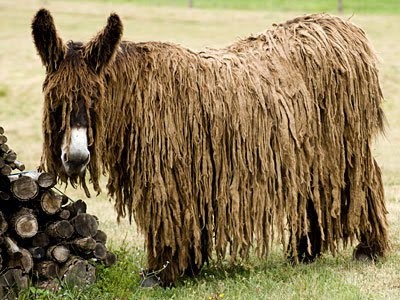
|
Poitou Donkeys
originates from the Poitou region
of France, and they are most likely related to the Poitevin horses. It is
thought that they were introduced in France by the Romans and may have been a wealth
status symbol for French Nobility. They were also regarded as the finest and
strongest donkeys in France, since they were as tall as large mules with legs
and joints as large as most carriage horses.
Poitou donkey
...
|
|
 Ponui Ponui
|
|

|
Ponui donkeys are New Zealand's only feral donkey breed. The
feral herd is established on Ponui Island in the Hauraki Gulf, east of
Auckland. They are descendants of three animals imported from Australia in the
1880s by the Chamberlin family, who obtained title to the island in 1854.
Ponui donkeys are mostly light grey in color, with a darker
dorsal stripe, and stand about ten hands (one meter) high.
In recent years a nu
...
|
|
 Primorsko-Dinarski Magarac Primorsko-Dinarski Magarac
|
|
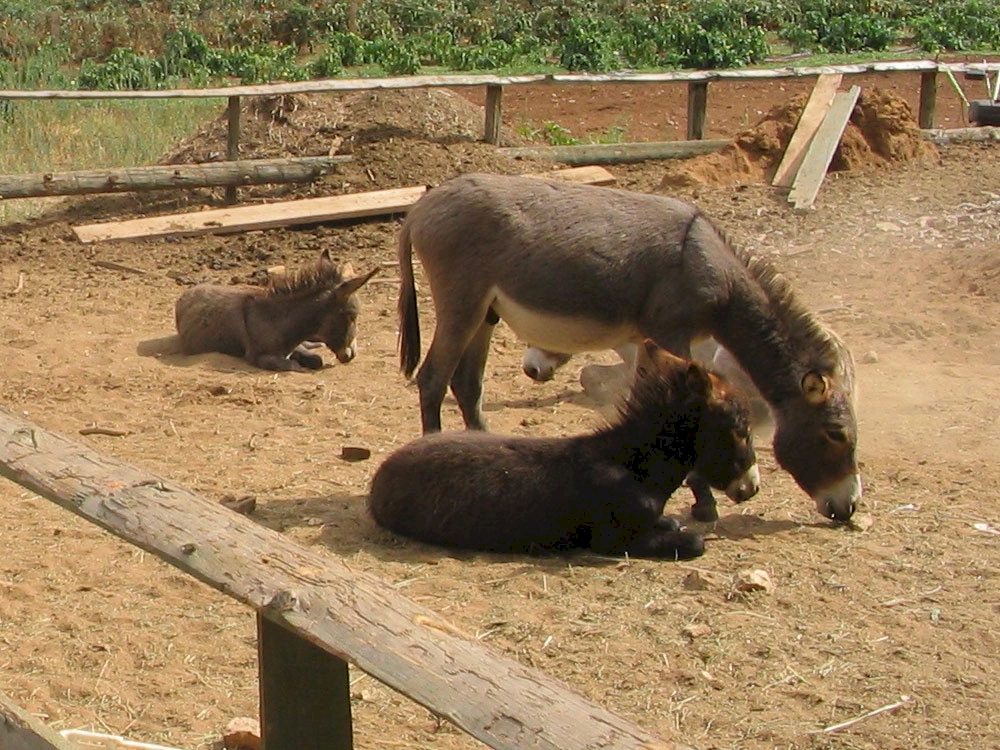
|
The Primorsko-Dinarski Magarac is a breed of domestic donkey that is found in the Primorje-Gorski Kotar County in Croatia. It is a large breed, with a well-proportioned body, long legs, and a distinctive appearance characterized by a thick, shaggy coat, long ears, and a bushy mane and tail. The breed is known for its strong work ethic, good temperament, and versatility, making it suitable for a range of tasks, including plowing fields, carrying h
...
|
|
 Provence Provence
|
|
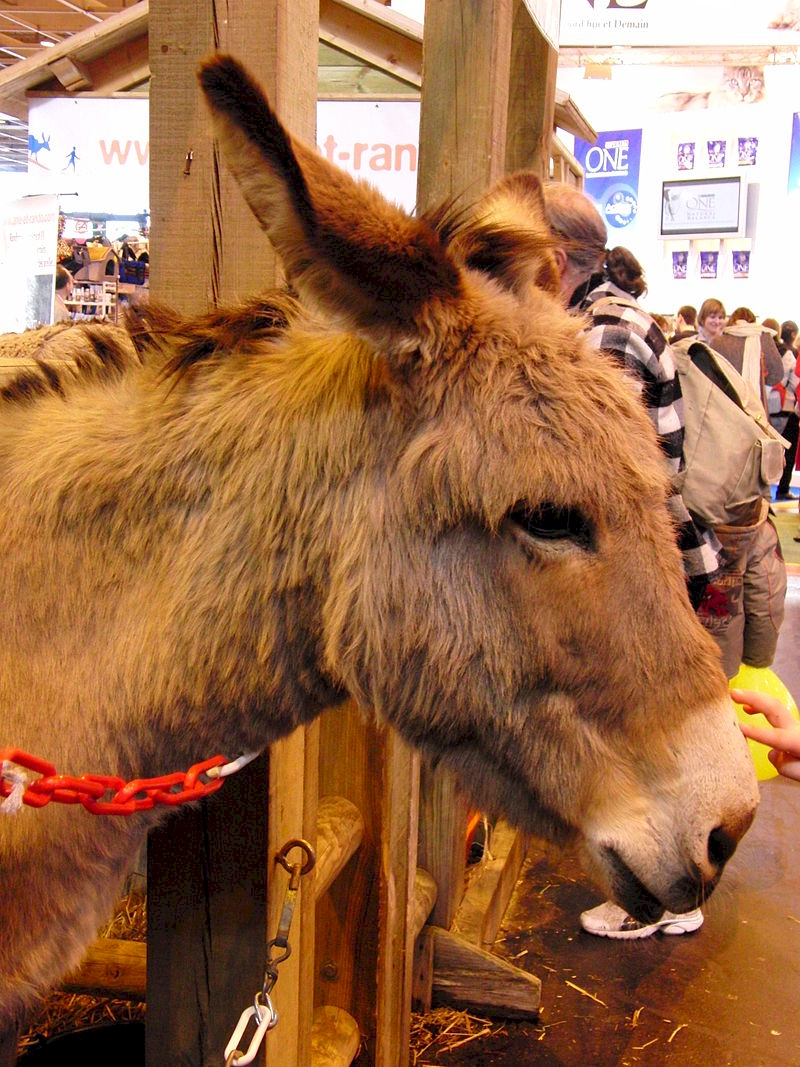
|
Provence donkeys, also known as the ânes de Provence or Provençal donkey, are a breed of domestic donkey that is native to the Provence region of southeastern France. They are medium-sized, typically standing between 12-14 hands at the shoulder, and are known for their distinctive appearance, with a greyish-brown coat, white underbelly, and black mane and tail.
In recent years, the population of Provence donkeys has declined, as they h
...
|
|
 Puttalam Buruw Puttalam Buruw
|
|
|
The Puttalam Buruwa is a breed of domestic donkey that is native to the Puttalam District in Sri Lanka. This breed is known for its hardiness and versatility, as it is used for a variety of purposes, including transportation, plowing, and carrying heavy loads.
Puttalam Buruwa donkeys are medium-sized animals, with an average height of about 12 hands at the shoulder. They have a sturdy build and a thick, dense coat that helps them withs
...
|
|
 Pyrenean Pyrenean
|
|
|
The Pyrenean donkey, also known as the Basque donkey, is a breed of domestic donkey that is native to the Pyrenees mountain range, which runs along the border between France and Spain. They are a medium to large breed, with a strong, well-proportioned body, long legs, and a distinctive appearance characterized by their long, shaggy coat and bushy mane and tail. The Pyrenean donkey is known for its calm and friendly disposition, making it well-sui
...
|
|
 Qinghai Qinghai
|
|
|
The Qinghai donkey, also known as the Tibetan donkey, is a breed of domestic donkey native to the Qinghai province in China. They are known for their hardiness and ability to adapt to harsh environments, making them well suited for high altitude regions such as the Tibetan plateau. Qinghai donkeys are medium-sized, with sturdy bodies and short, thick legs. They have thick coats that protect them from the cold and are typically gray or black in co
...
|
|
 Ragusano Ragusano
|
|

|
Ragusano Donkeys
originated in the area of Ragusa, Modica, Scicli S.Croce Camerina in Sicily.
They are a new breed, officially recognized in 1953, when during selection
studies the Horse Increase Institute of Catania (they keep the registry office)
was able to fix a few characteristics. All the donkeys living in Sicily are to
be traced back to the Pantelleria breed, especially those in the province of
Trapani and to the usually called Sicil
...
|
|
 Romanian Romanian
|
|
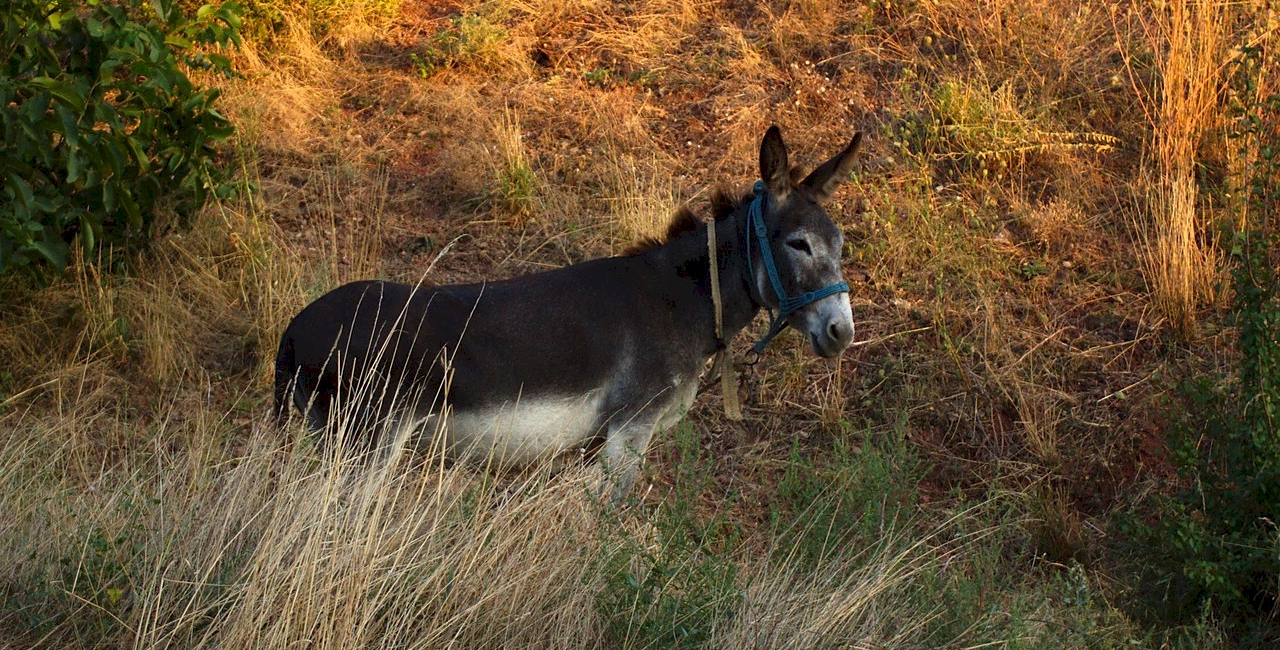
|
The Romanian donkey is a breed of domestic donkey native to Romania. They are a small to medium-sized breed, typically ranging in height from 10-13 hands at the shoulder. They have a distinctive appearance, with a sloping back, short legs, and large, floppy ears. Romanian donkeys are known for their calm and docile temperament, making them suitable for use as work animals and as pets. They are primarily used for plowing fields, carrying heavy loa
...
|
|
 Sardi Sardi
|
|
|
The Sardi donkey is a breed of domestic donkey that is native to the Sardi region of Sardinia, Italy. They are a small to medium-sized breed, typically ranging in height from 10-13 hands at the shoulder. They have a compact, muscular build and are known for their strength and endurance. Sardi donkeys are primarily used for agricultural work, such as plowing fields and carrying heavy loads, but they can also be used for transportation and as pack
...
|
|
 Sardinian Sardinian
|
|

|
Sardinian Donkeys are, unsurprisingly, from Sardinia, Italy.
They have been on the island for a very long time. They are lively and rustic
and are used as beasts of burden and farm labor. They are highly appreciated in
Italy and abroad. They a have a lively temperament and no special needs.
Content and Photo source: Agraria.org.
|
|
 Sarvar Sarvar
|
|
|
The Sarvar donkey is a breed of domestic donkey that is found in the Sarvar region of Hungary. This breed is known for its strong and sturdy build, as well as its versatility and reliability.
Sarvar donkeys are typically medium-sized animals, with an average height of about 12 to 14 hands at the shoulder. They have a strong, muscular body and sturdy legs, which make them well-suited for a variety of tasks, such as plowing, transportati
...
|
|
 Sennar Sennar
|
|
|
The Sennar donkey is a breed of domestic donkey that is native to the Sennar region of Sudan. They are a medium to large-sized breed, with a sturdy build and strong legs. They are known for their hardiness and ability to adapt to harsh environments, making them well-suited for work in the hot, arid conditions of the Sennar region. Sennar donkeys are primarily used for plowing fields, carrying heavy loads, and as a source of milk and meat. They ha
...
|
|
 Shanbei Shanbei
|
|
|
The Shanbei donkey, also known as the Northern Shaanxi donkey, is a breed of domestic donkey native to the Shanbei region of northern China. They are a medium to large-sized breed, with a sturdy build and strong legs. They are known for their hardiness and ability to adapt to harsh environments, making them well-suited for work in the mountainous and semi-arid regions of Shanbei.
Shanbei donkeys are primarily used for plowing fields, c
...
|
|
 Sicilian Grey Sicilian Grey
|
|

|
Sicilian grey
Donkeys, or the ‘Grey from Sicily’ are also commonly known as ‘Ferrante’.
They are a very
ancient breed. We have some news in Chicoli (1870) about two donkey breeds in
Sicily: an ordinary working breed (Sicilian) of small size with an uneven coat
and the lower parts of the body constantly white and the breed of Pantelleria,
a saddle breed from upper-class stables. Later about the Sicilian donkey
Mascheroni (1927) considers
...
|
|
 Sjeverno Jadranski Magarac Sjeverno Jadranski Magarac
|
|
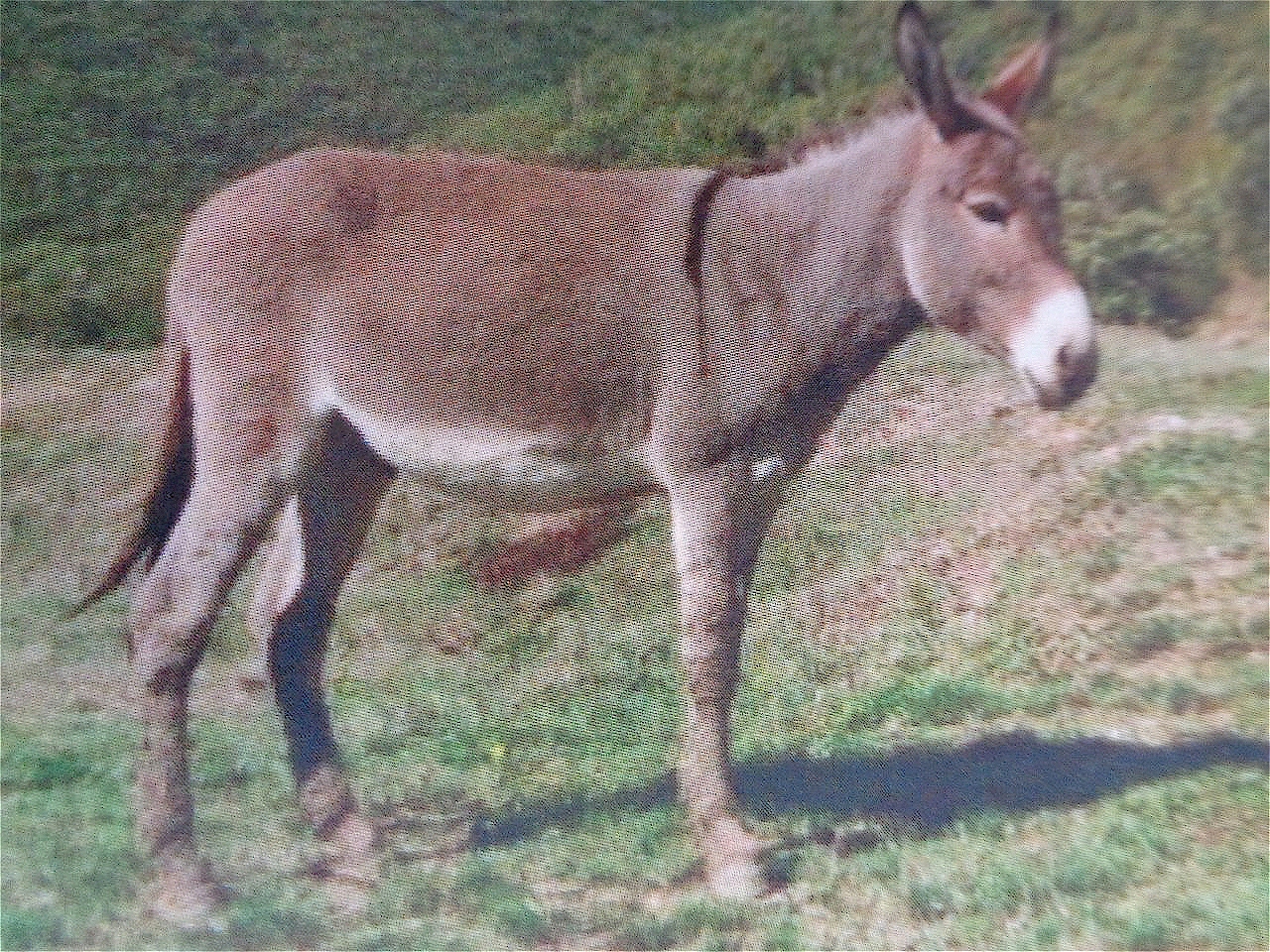
|
The Sjeverno Jadranski Magarac is a breed of domestic donkey that is native to the northern Adriatic region of Croatia. They are a small to medium-sized breed, typically ranging in height from 10-13 hands at the shoulder. They are known for their calm and docile temperament, making them suitable for use as work animals and as pets.
Sjeverno Jadranski Magarac donkeys have a distinctive appearance, with a short, rounded head and large,
...
|
|
 Somali Somali
|
|
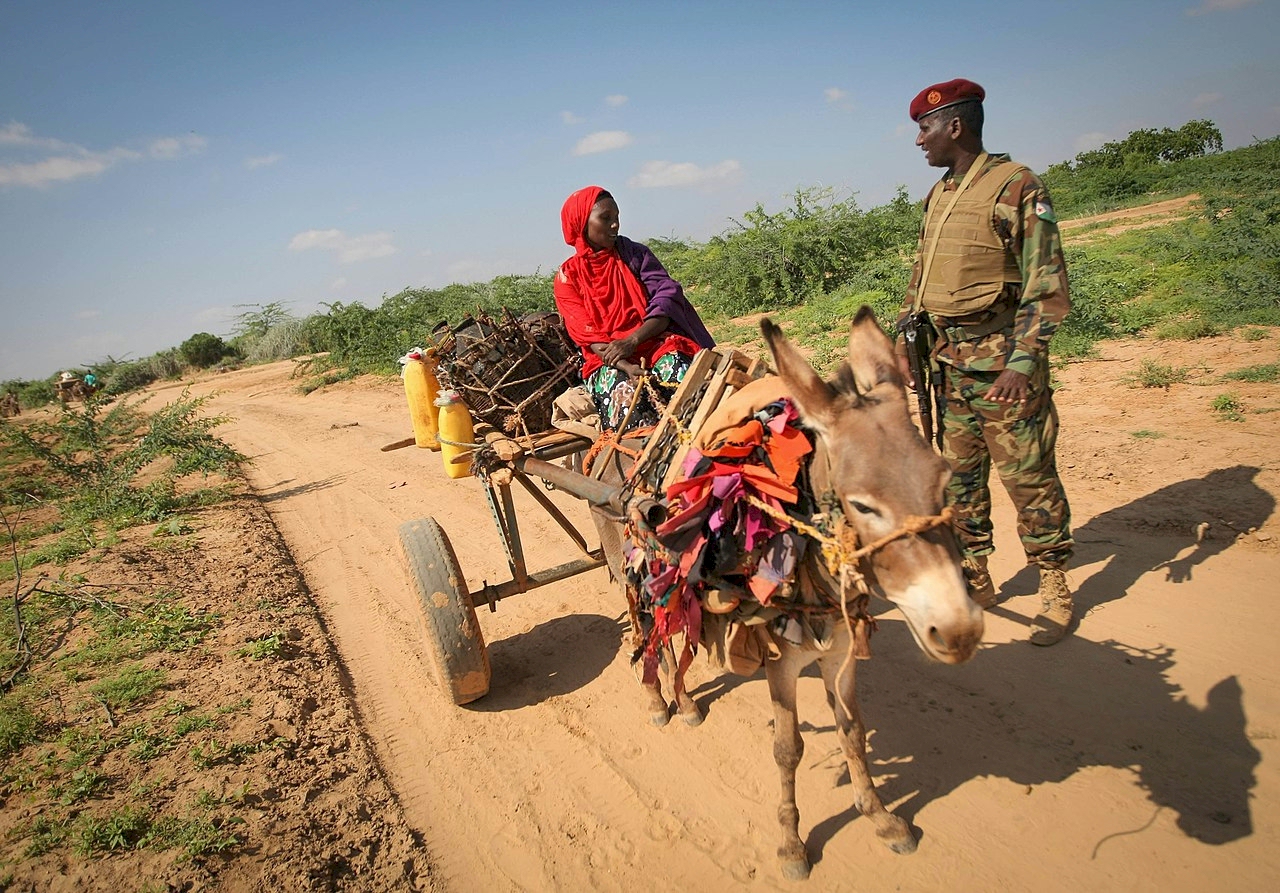
|
The Somali donkey is a breed of domestic donkey that is native to the Horn of Africa, specifically the region that encompasses modern-day Somalia. They are a small to medium-sized breed, typically ranging in height from 10-13 hands at the shoulder. They are known for their agility, speed, and endurance, making them well-suited for use as riding animals and pack animals.
Somali donkeys have a distinctive appearance, with a long, slender
...
|
|
 South-West Chinese South-West Chinese
|
|
|
The South-West Chinese donkey is a breed of domestic donkey that is native to the southwestern regions of China. They are a small to medium-sized breed, typically ranging in height from 10-13 hands at the shoulder. They are known for their hardiness, adaptability, and calm temperament, making them suitable for use as work animals and as pets.
South-West Chinese donkeys have a distinctive appearance, with a short, rounded head and large
...
|
|
 Spotted Spotted
|
|
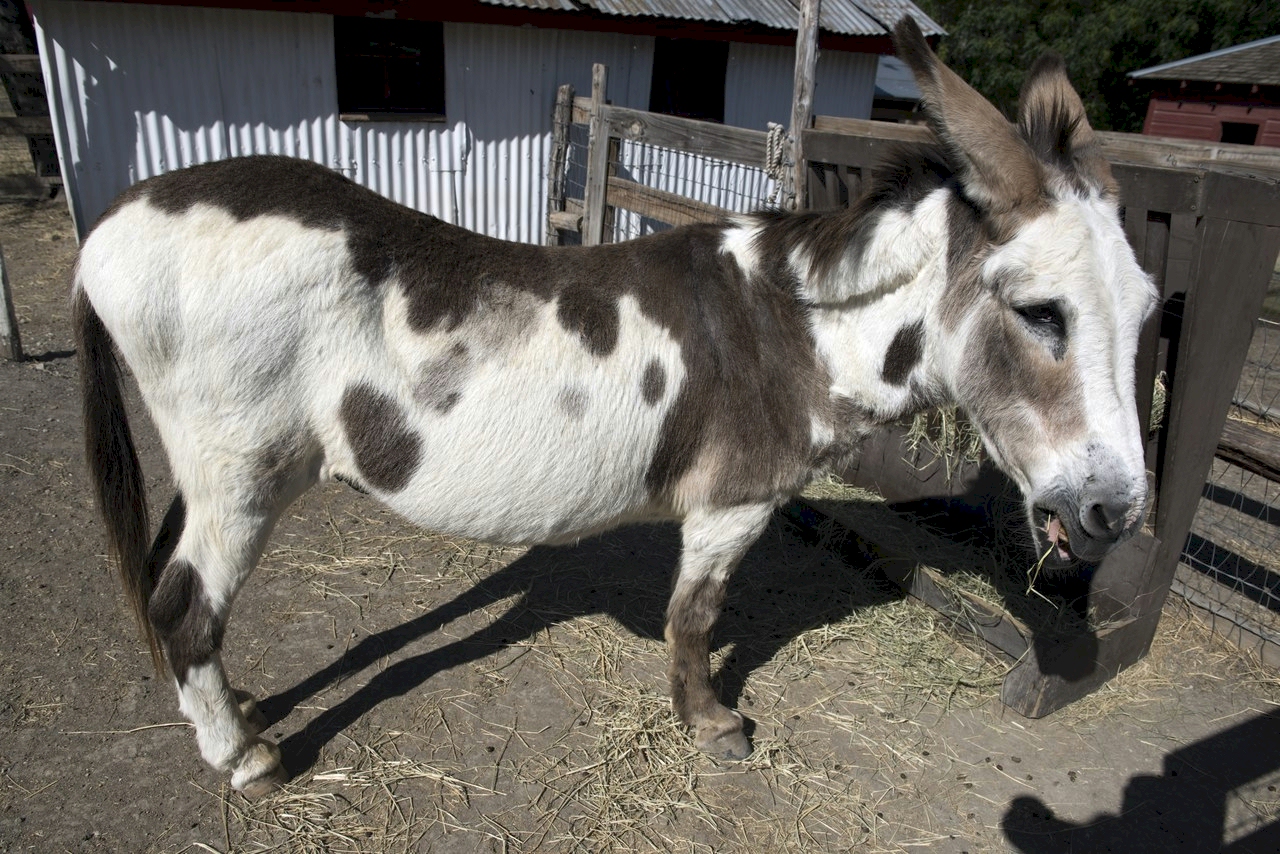
|
The Spotted donkey is a breed of domestic donkey that is characterized by its unique coat pattern, which features distinctive spots of white fur on a base coat of any color. The breed has been developed over many generations through selective breeding of donkeys with the desired coat pattern.
Spotted donkeys come in a range of sizes, from miniature donkeys that stand just over 30 inches at the shoulder to larger donkeys that can stand
...
|
|
 Subei Subei
|
|
|
The Subei donkey is a breed of domestic donkey that is native to the Subei region of Jiangsu Province in China. They are a medium-sized breed, typically standing between 12-14 hands at the shoulder. They are known for their hardiness, intelligence, and good temperament, making them well-suited for a variety of purposes, including work and as pets.
Subei donkeys have a distinctive appearance, with a short, rounded head, and large, flopp
...
|
|
 Sudanese Pack Sudanese Pack
|
|
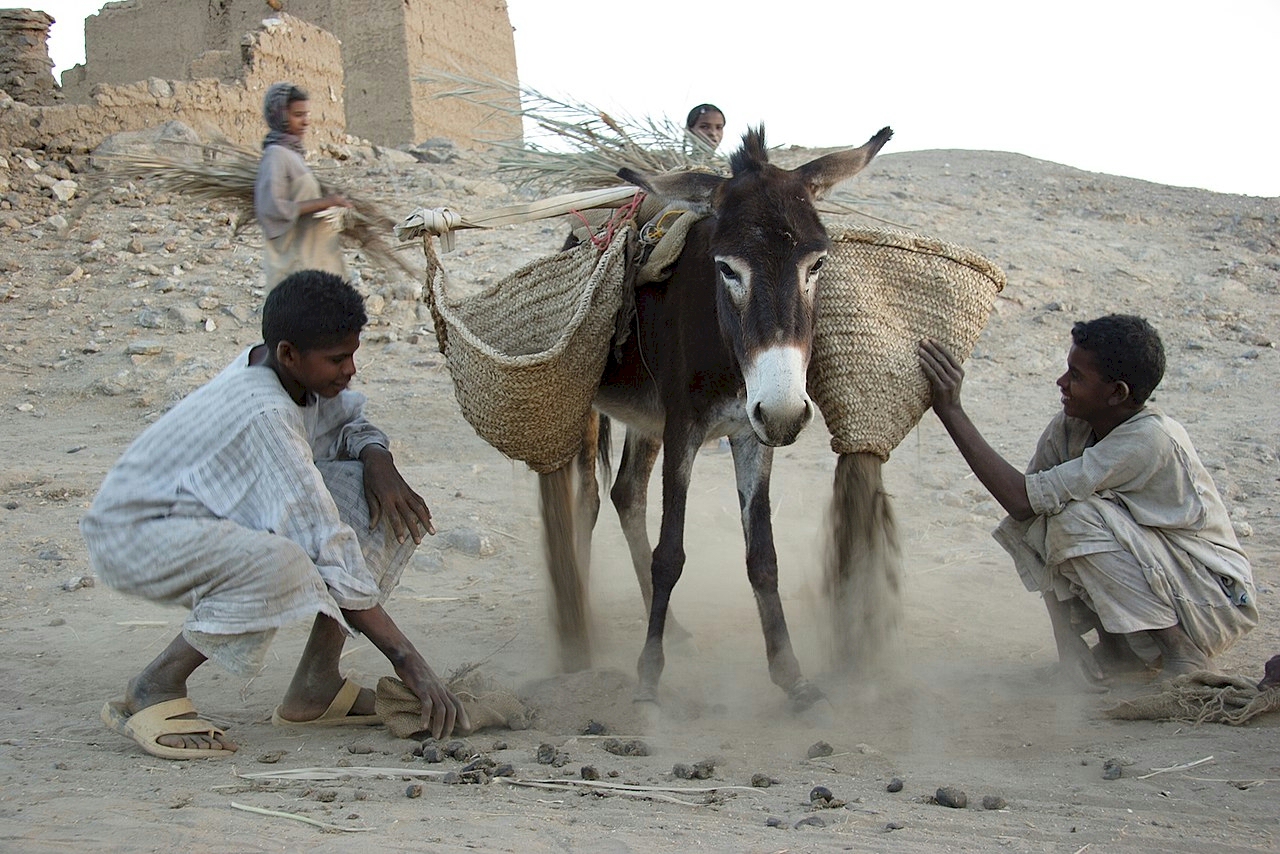
|
The Sudanese Pack donkey is a breed of domestic donkey that is native to Sudan in North Africa. They are a medium-sized breed, typically standing between 12-14 hands at the shoulder. They are known for their hardiness, intelligence, and good temperament, making them well-suited for work as pack animals and for use in transportation.
Sudanese Pack donkeys have a distinctive appearance, with a short, rounded head, and large, floppy ears.
...
|
|
 Syrian Syrian
|
|
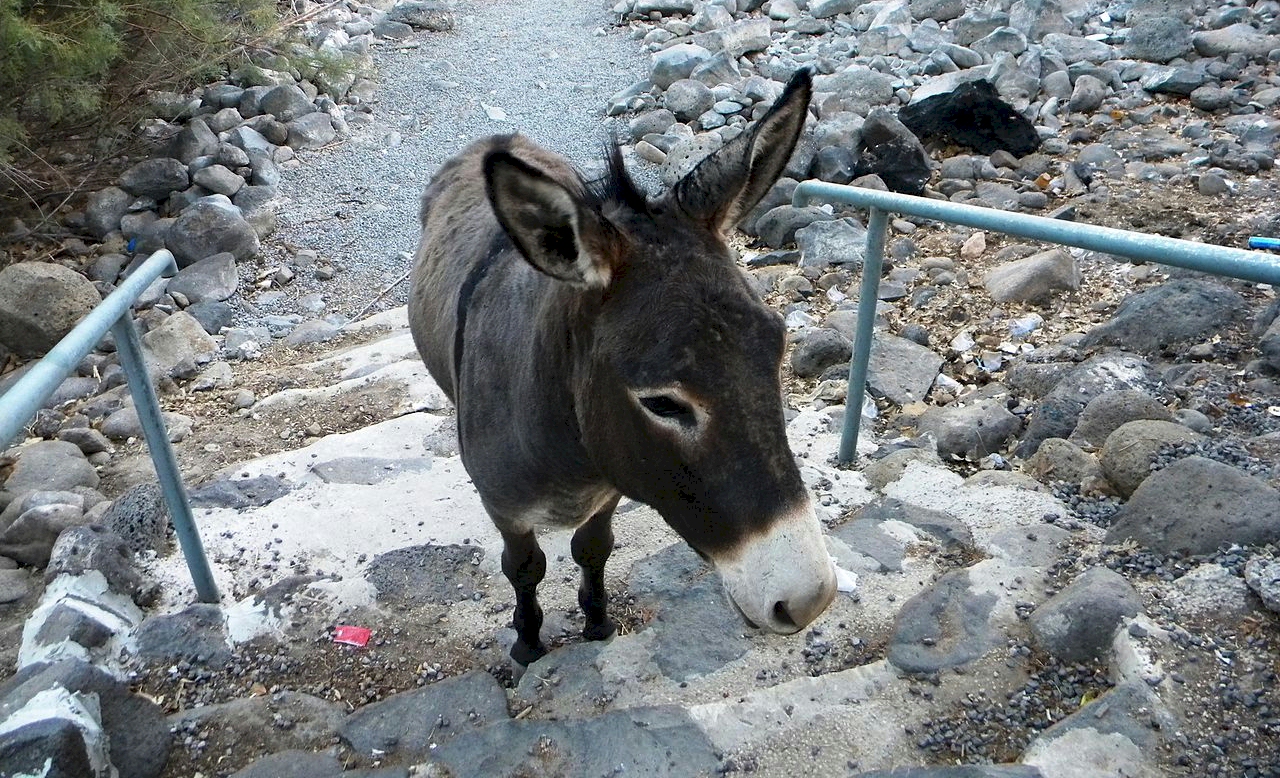
|
The Syrian donkey is a breed of domestic donkey that is native to Syria and the surrounding region. They are a medium-sized breed, typically standing between 12-14 hands at the shoulder. They are known for their hardiness, intelligence, and good temperament, making them well-suited for work as pack animals and for use in transportation.
Syrian donkeys have a distinctive appearance, with a short, rounded head, and large, floppy ears. Th
...
|
|
 Tadzhikskaya Tadzhikskaya
|
|
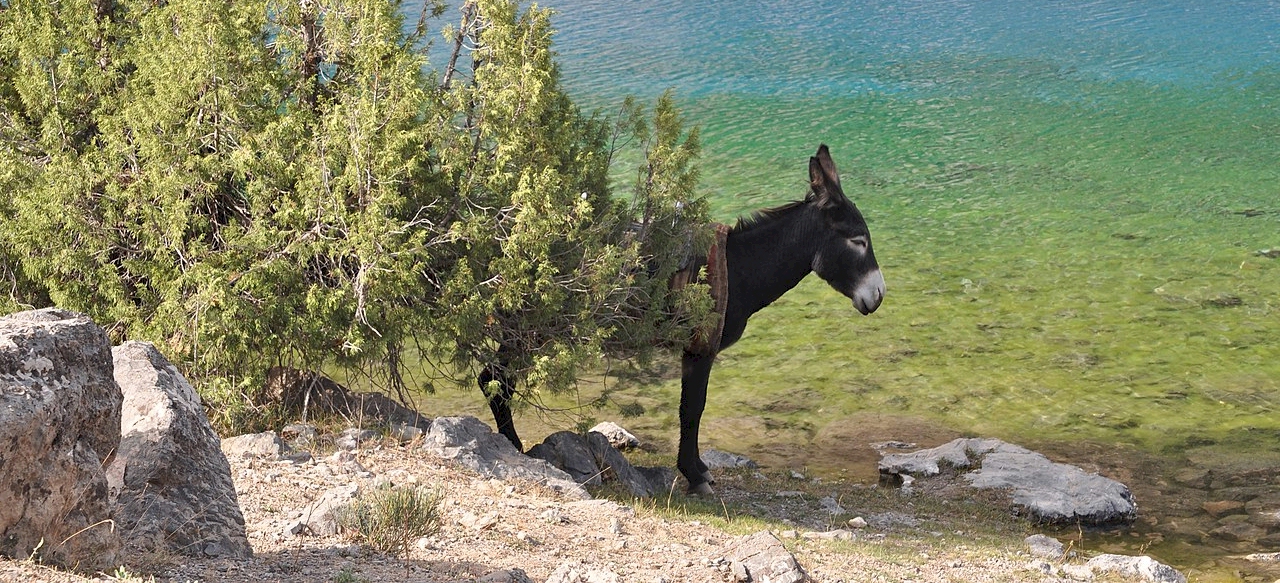
|
The Tadzhikskaya donkey is a breed of domestic donkey that is native to Tajikistan and the surrounding region. They are a medium-sized breed, typically standing between 12-14 hands at the shoulder. They are known for their hardiness, intelligence, and good temperament, making them well-suited for work as pack animals and for use in transportation.
Tadzhikskaya donkeys have a distinctive appearance, with a short, rounded head, and large
...
|
|
 Taihang Taihang
|
|
|
The Taihang donkey is a breed of domestic donkey that is native to the Taihang Mountains in China. They are a medium-sized breed, typically standing between 12-14 hands at the shoulder. They are known for their hardiness, intelligence, and good temperament, making them well-suited for work as pack animals and for use in transportation.
Taihang donkeys have a distinctive appearance, with a short, rounded head, and large, floppy ears. Th
...
|
|
 Tibetan Tibetan
|
|
|
The Tibetan donkey is a breed of domestic donkey that is native to Tibet and the surrounding region. They are a medium-sized breed, typically standing between 12-14 hands at the shoulder. They are known for their hardiness, intelligence, and good temperament, making them well-suited for work as pack animals and for use in transportation.
Tibetan donkeys have a distinctive appearance, with a short, rounded head, and large, floppy ears.
...
|
|
 Toposa Toposa
|
|
|
The Toposa donkey is a breed of domestic donkey that is native to South Sudan and the surrounding region. They are a medium-sized breed, typically standing between 12-14 hands at the shoulder. They are known for their hardiness, intelligence, and good temperament, making them well-suited for work as pack animals and for use in transportation.
Toposa donkeys have a distinctive appearance, with a short, rounded head, and large, floppy ea
...
|
|
 Tswana Tswana
|
|
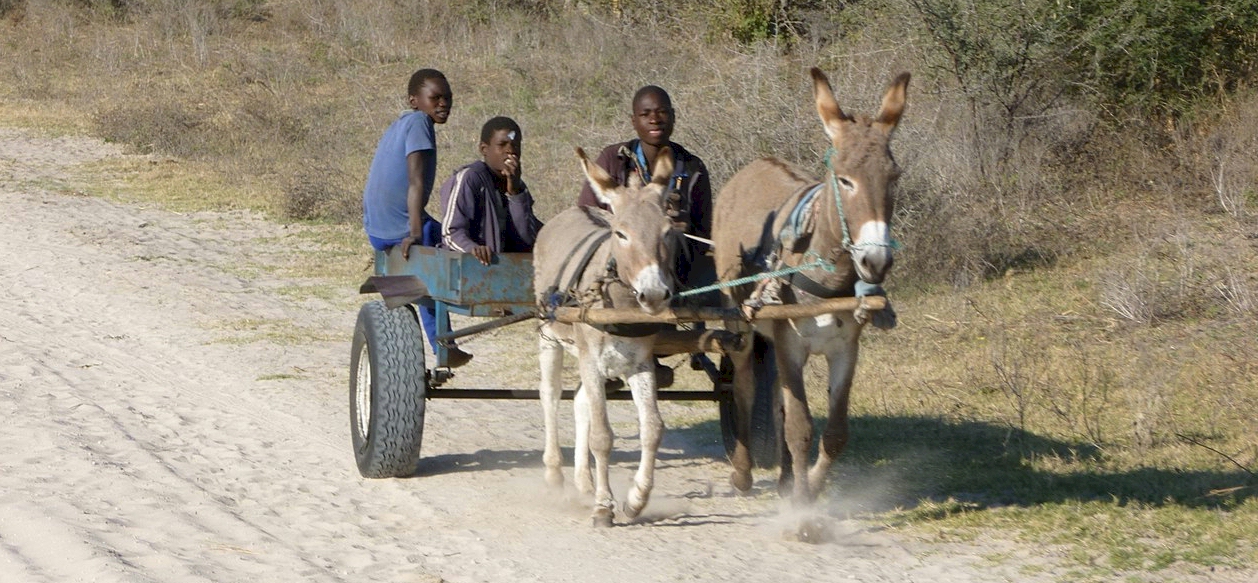
|
The Tswana donkey is a breed of domestic donkey that is native to Botswana and the surrounding region. They are a medium-sized breed, typically standing between 12-14 hands at the shoulder. They are known for their hardiness, intelligence, and good temperament, making them well-suited for work as pack animals and for use in transportation.
Tswana donkeys have a distinctive appearance, with a short, rounded head, and large, floppy ears.
...
|
|
 Tunisian Tunisian
|
|
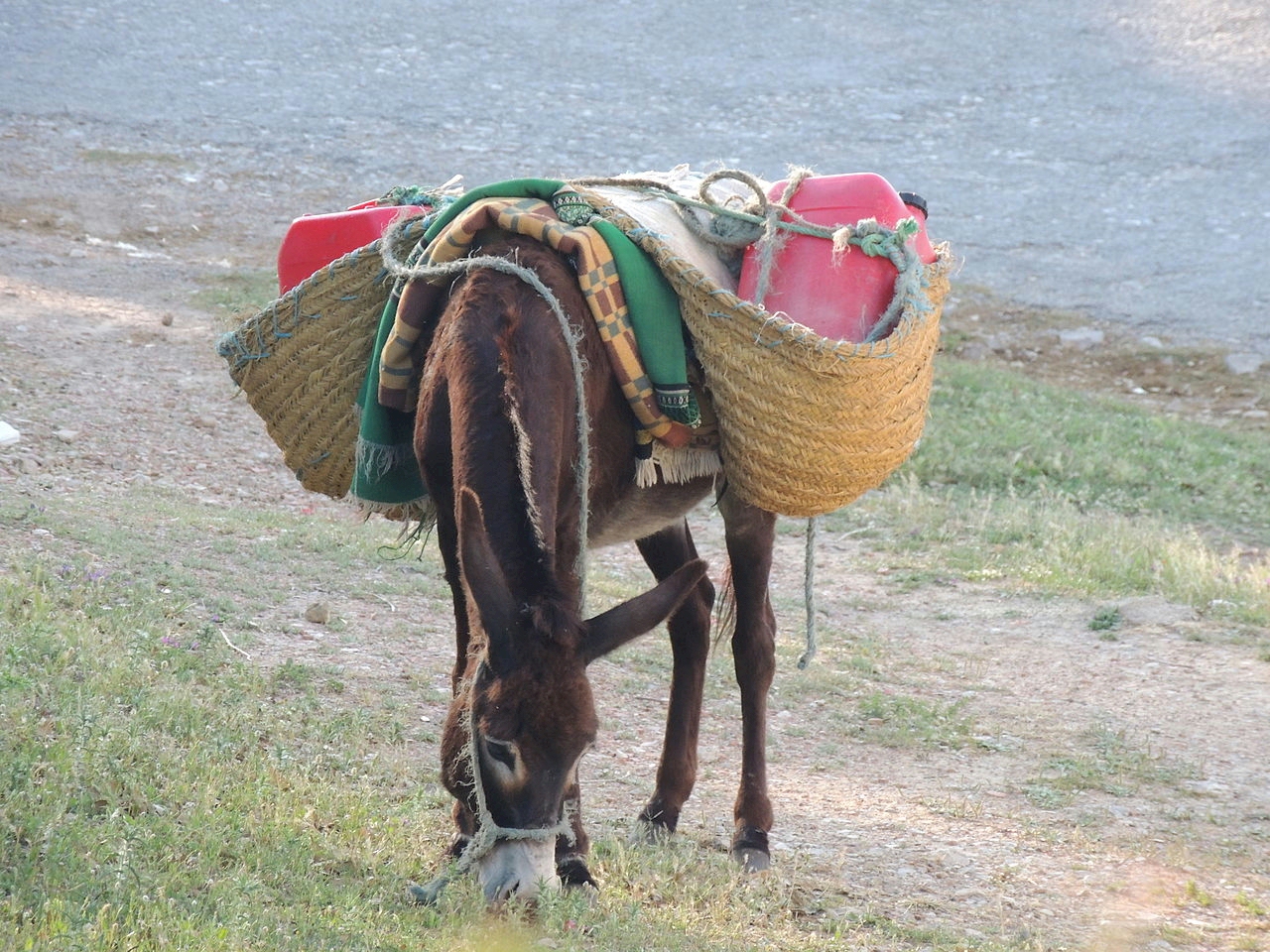
|
The Tunisian donkey is a breed of domestic donkey that is native to Tunisia and the surrounding region. They are a medium-sized breed, typically standing between 12-14 hands at the shoulder. They are known for their hardiness, intelligence, and good temperament, making them well-suited for work as pack animals and for use in transportation.
Tunisian donkeys have a distinctive appearance, with a short, rounded head, and large, floppy
...
|
|
 Turkmenskaya Turkmenskaya
|
|

|
The Turkmenskaya donkey is a breed of domestic donkey that is native to Turkmenistan and the surrounding region. They are a medium-sized breed, typically standing between 12-14 hands at the shoulder. They are known for their strength and endurance, making them well-suited for work as pack animals and for use in transportation.
Turkmenskaya donkeys have a distinctive appearance, with a short, rounded head, and large, floppy ears. They h
...
|
|
 Uzbekskaya Uzbekskaya
|
|
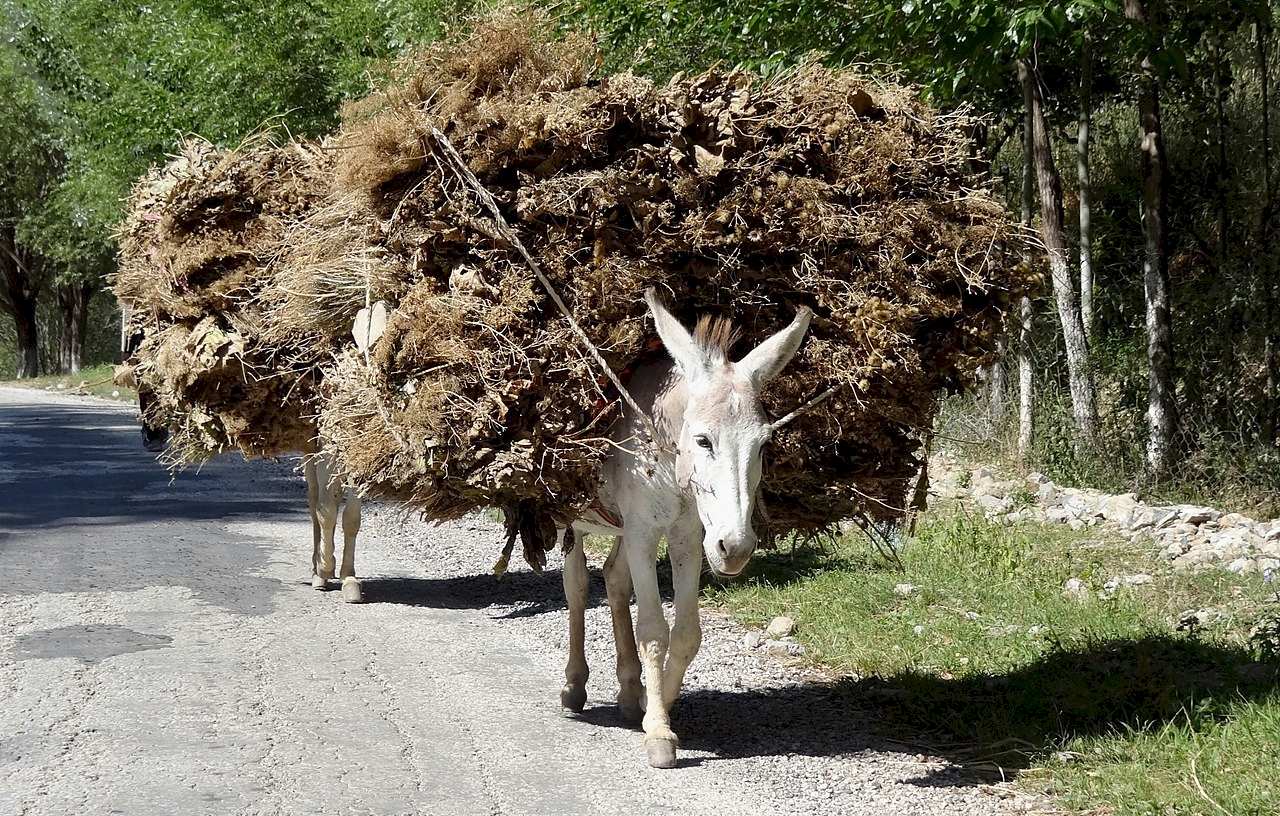
|
Uzbekskaya is a breed of domestic donkey that is native to Uzbekistan and the surrounding region. They are a medium-sized breed, typically standing between 12-14 hands at the shoulder. They are known for their strength and endurance, making them well-suited for work as pack animals and for use in transportation.
Uzbekskaya donkeys have a distinctive appearance, with a short, rounded head, and large, floppy ears. They have a sturdy, mus
...
|
|
 Xinjiang Xinjiang
|
|
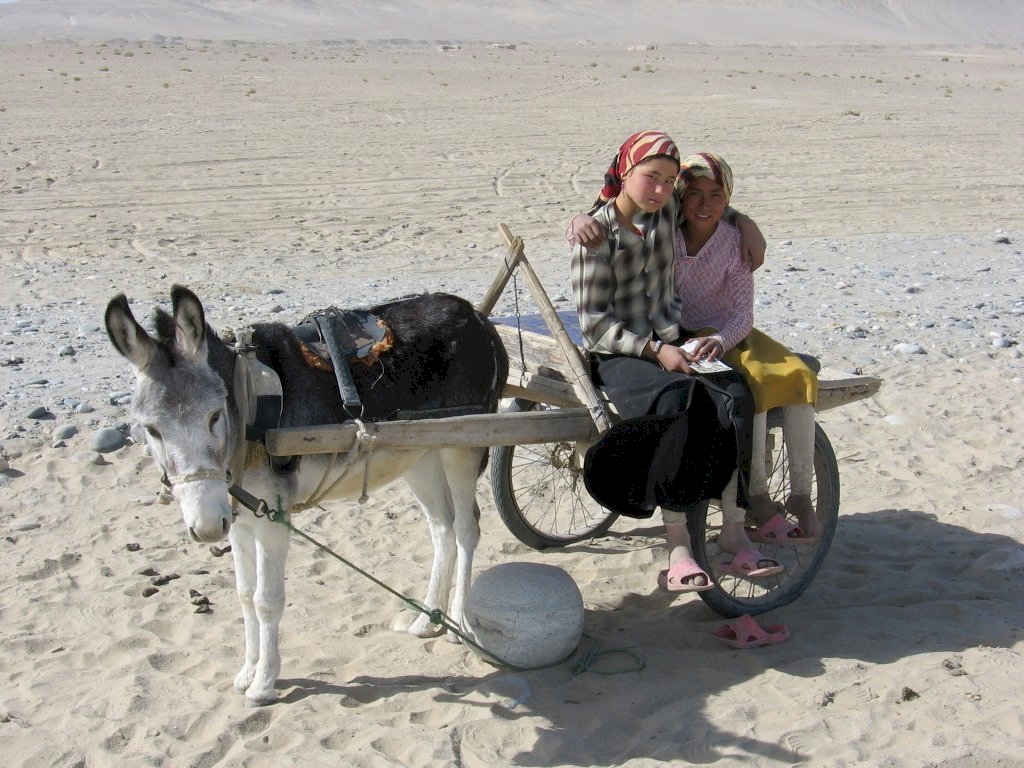
|
The Xinjiang donkey is a breed of domestic donkey that is native to Xinjiang province in China. They are a medium-sized breed, typically standing between 12-14 hands at the shoulder. They are known for their strength and endurance, making them well-suited for work as pack animals and for use in transportation.
|
|
 Yangyuan Yangyuan
|
|
|
Yangyuan donkeys are a breed of domestic donkey native to Yangyuan County in China. They are a medium-sized breed, typically standing between 12-14 hands at the shoulder. They are known for their strength and endurance, making them well-suited for work as pack animals and for use in transportation.
|
|
 Yunnan Yunnan
|
|
|
Yunnan donkeys are a breed of domestic donkey that is native to Yunnan province in China. They are a medium-sized breed, typically standing between 12-14 hands at the shoulder. They are known for their strength and endurance, making them well-suited for work as pack animals and for use in transportation.
|
|
 Zamorano-Leonés Zamorano-Leonés
|
|
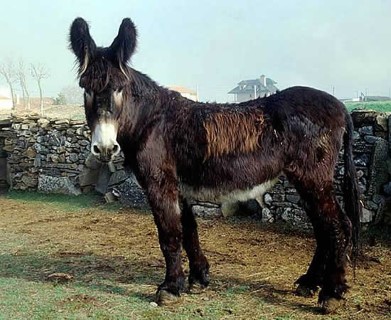
|
Zamorano-Leonés are large domestic donkeys from the provinces of Zamora and León, in the autonomous community of Castilla y León, in north-western Spain. The name derives from those of the two provinces.
Donkeys in the province of Zamora date back to at least the fifteenth century. The Zamorano donkey was exported to the New World, and was the first Spanish donkey to contribute to the evolution of the North American donkey. From the ei
...
|

© 2007 - 2024 Copyright Global Grange inc. All Rights Reserved.
|
|
